The standout shows of Paris Fashion Week Men’s S/S 2026: Hermès to Craig Green
Wallpaper* picks the very best of Paris Fashion Week Men’s S/S 2026, from Véronique Nichanian’s portrait of summer in the city for Hermès to Craig Green’s return to the Paris runway
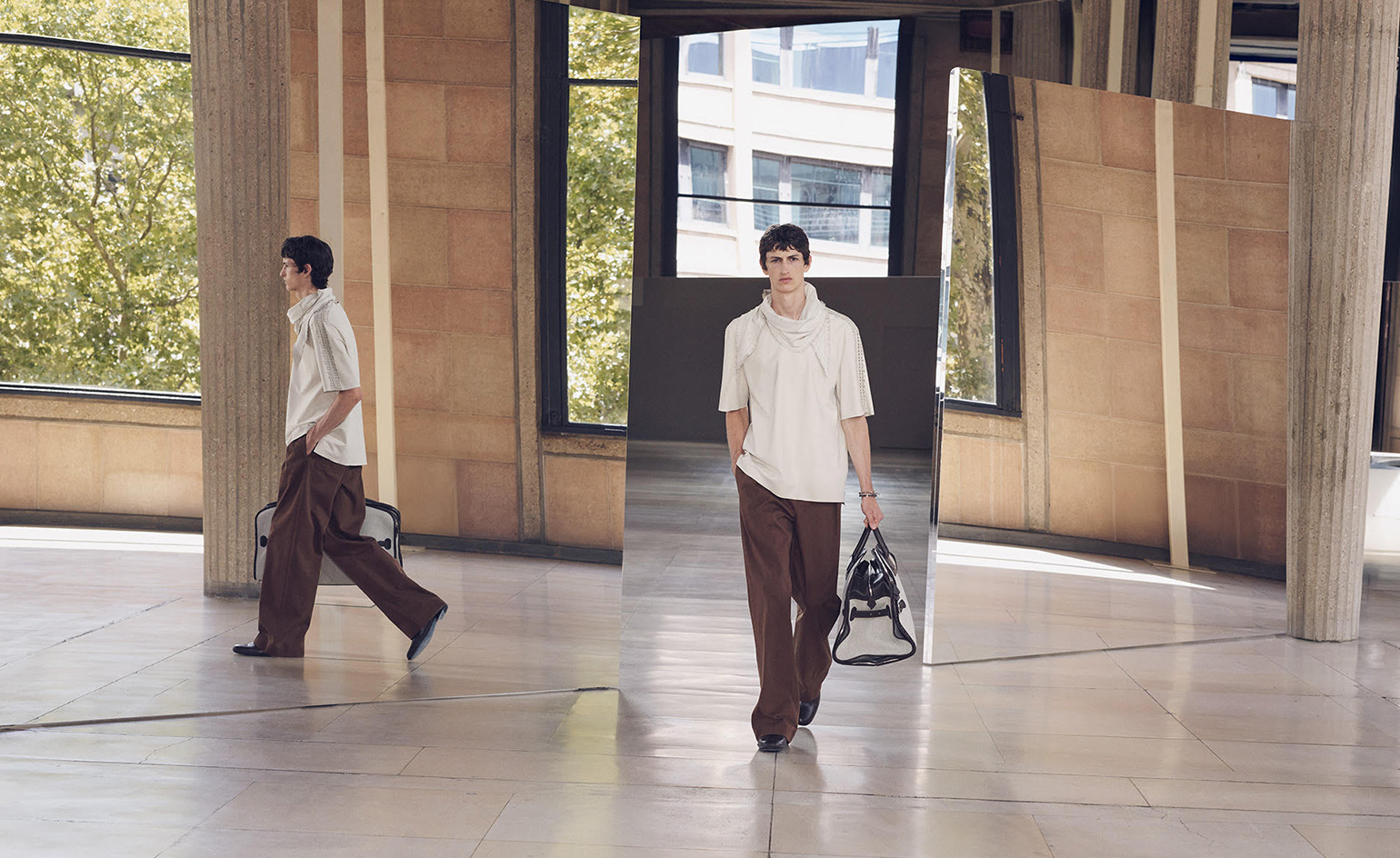
Orla Brennan
Yesterday marked the end of the S/S 2026 menswear season and the last of jam-packed six days in Paris. Saint Laurent and Louis Vuitton opened proceedings on Tuesday with equally fantastical spectacles set within two of Paris’ best-loved art institutions. At the Bourse de Commerce, Anthony Vaccarello’s latest Saint Laurent collection sought a languid ease through an imagined trip between Paris and Fire Island, backdropped by a pool of floating porcelain bowls by Céleste Boursier-Mougenot. As the sun set in the evening, a star-studded crowd (including Jay-Z and Beyonce) gathered at the courtyard of the Pompidou Centre to see Pharrell Williams’ staging of a supersized game of snakes and ladders, where he ground down into his vision of the modern dandy through a collection that skewed Indian craftsmanship with the house’s damier-patterned codes.
Earlier in the week, Rick Owens opened ‘Temple of Love’ in tandem with his theatrical Palais de Tokyo show, a retrospective that charts the incubation of his subversive design philosophy from early days in LA to Paris. Elsewhere, alongside the Comme des Garçons roster, renegade New York favourite Willy Chavarria presented his second Paris collection and London’s own Wales Bonner made a soulful return to the schedule after a hiatus. Jonathan Anderson’s debut at Dior made for the most anticipated event of the week. Designers Pier Paolo Piccioli, Donatella Versace, Pharrell Williams, Silvia Venturini Fendi, and Stefano Pilati came in support of the historic moment, for which Anderson revealed an astute collection that ‘de and recoded’ Dior’s 100 year history. It was, said the designer, about ‘taking joy in the art of dressing up.’
Here, we select the best shows of Paris Fashion Week Men’s S/S 2026
The best of Paris Fashion Week Men’s S/S 2026
Craig Green
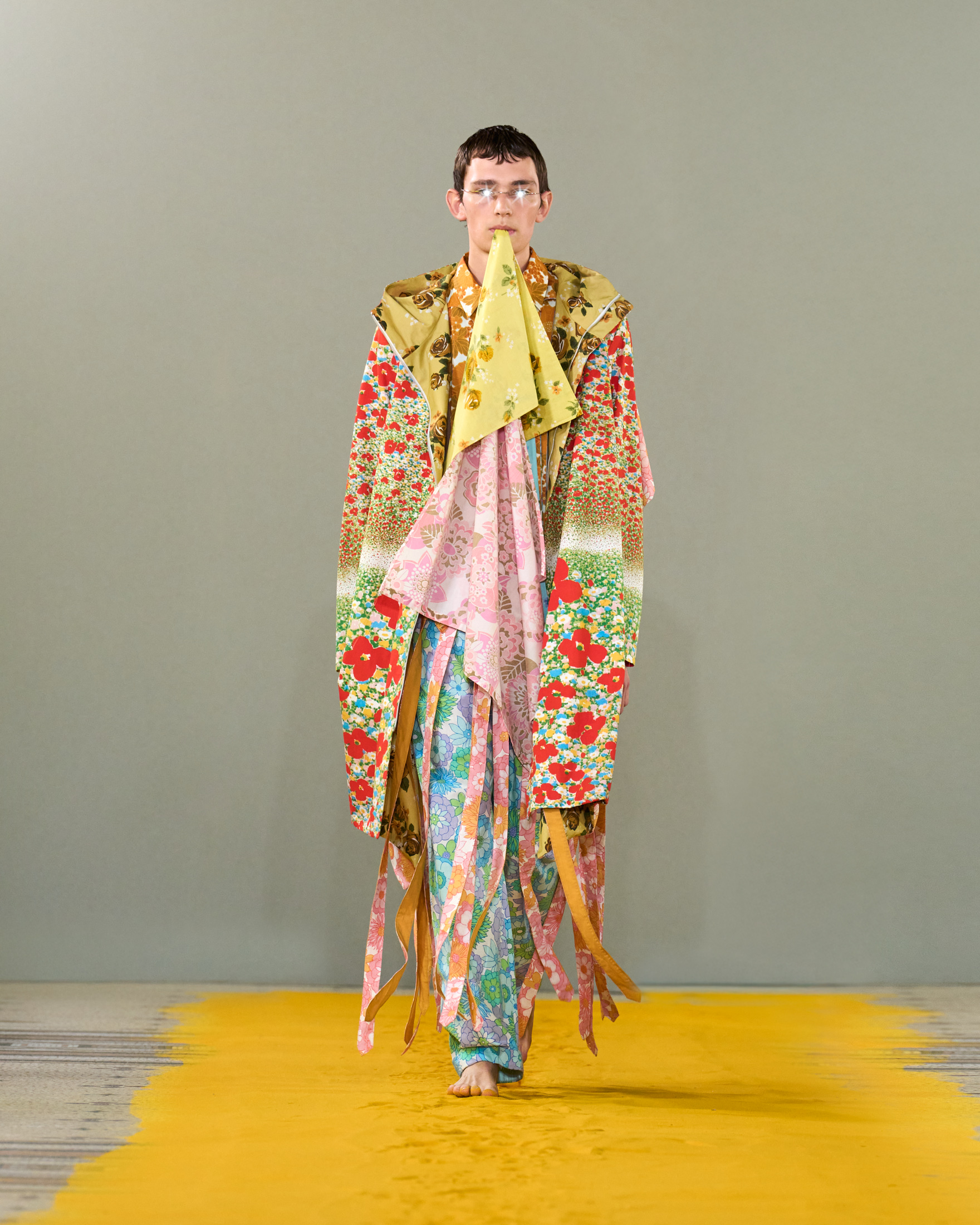
It has been two years since Craig Green showed in Paris, and a year after his last runway show in London, a purposefully reduced schedule which signals a designer who works on his own terms. The time this affords Green – who continues to live in work in London – means his collections are deeply thought, and near-ceremonial (indeed, in the Sunday morning slot, walking towards the cathedral-like Conservatoire National des Arts et Métiers, you could hear glimpses of choirsong as Paris’ churches undertook their own Sunday services).
The space had been laid with a runway in bright yellow sand, a colour that only revealed itself when the lights turned on at the start of the show. Yellow, Green said backstage, was a colour he was thinking about for the way it affects the mood – often jarringly – ‘the idea that babies cry more in a yellow room, that people have more arguments in a yellow room’. The deep shade he chose, which ran through the collection itself, was also one he linked to the late 1960s, a time period which informed the collection. A series of extraordinary layered looks, comprising asymmetric parka jackets and streamer-like shirts, featured a heady melange of prints derived from vintage bed sheets of the era. Meanwhile thick, whip-stitched belts were painted with dainty Alpine flowers.
Somewhat unexpectedly, The Beatles had been one of Green’s influences this season, particularly the psychedelia of their later oeuvre. ‘I think there were a lot of references to psychedelic, mind-opening [practices],’ he said, noting the illuminated glasses – which gave models surreal glowing eyes – were constructed from the lights usually used for dolls houses. ‘I was thinking about the era when The Beatles found LSD and [there was] this switch and change in their work.’ Green saw the colourful closing looks as the opening ones ‘with their minds widened’.
But Green was also inspired by the band’s prolific output and endless reserves of creative energy. ‘What they achieved was almost like a miracle,’ he said. ‘The amount of albums they were putting out, the amount of work they were doing. It’s almost otherworldly; it’s the joy of doing things.’ JM
Receive our daily digest of inspiration, escapism and design stories from around the world direct to your inbox.
Wooyoungmi
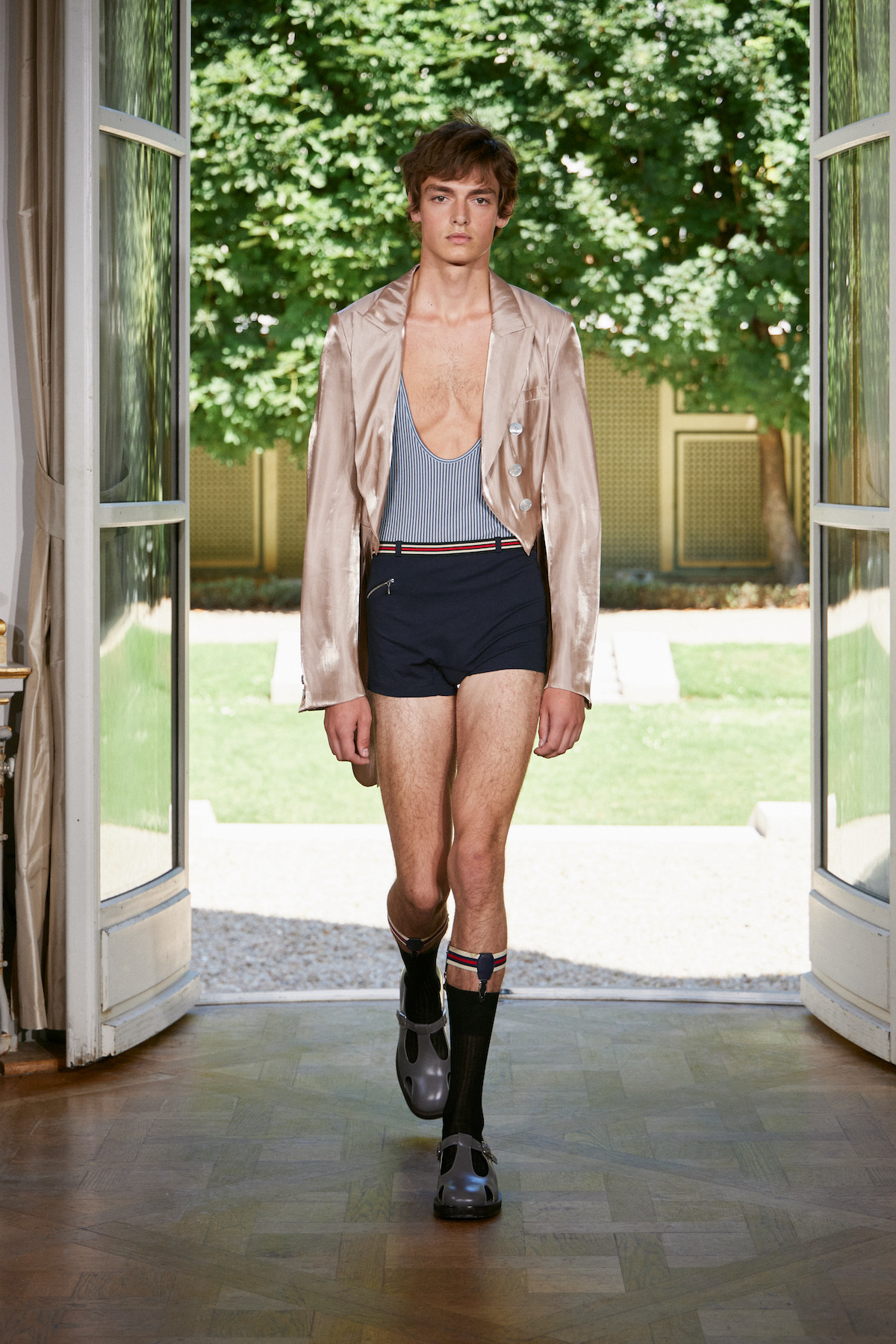
Tails are probably the last thing you'd want to wear – bar a fur coat – at the height of summer, unless, perhaps, they were Woo Youngmi’s featherlight viscose versions. Shown this afternoon at the stately Maison de la Chimie in Paris, the designer’s S/S 2026 collection doubled down on her decades-long fascination with the ceremonial rigour of tailoring – though this time, through the context of hot, humid South Korean summers. Reimagining old-world dress codes in light, breathable fabrics – cotton poplin, silk, and superfine lycra – the collection brought together a series of razor-sharp silhouettes designed to remain elegant in soaring city temperatures. Beyond tailoring, turn of the century gentlemen’s swimming costumes inspired a storyline of striped, deep-scoop tops and miniscule short shorts, worn with knee-high socks and mary janes. Elsewhere, slender pyjama trousers, slip dresses, and slinky camisoles saw Wooyoungmi join the cohort of designers who put their spin on sleepwear this season (alongside Dolce & Gabbana, Armani, and Kiko Kostadinov). Expressed in a mellow, balmy palette the designer described as capturing the ‘ecstasy of summer,’ it was a fitting finale to a busy menswear season in a European heatwave. OB
Hermès
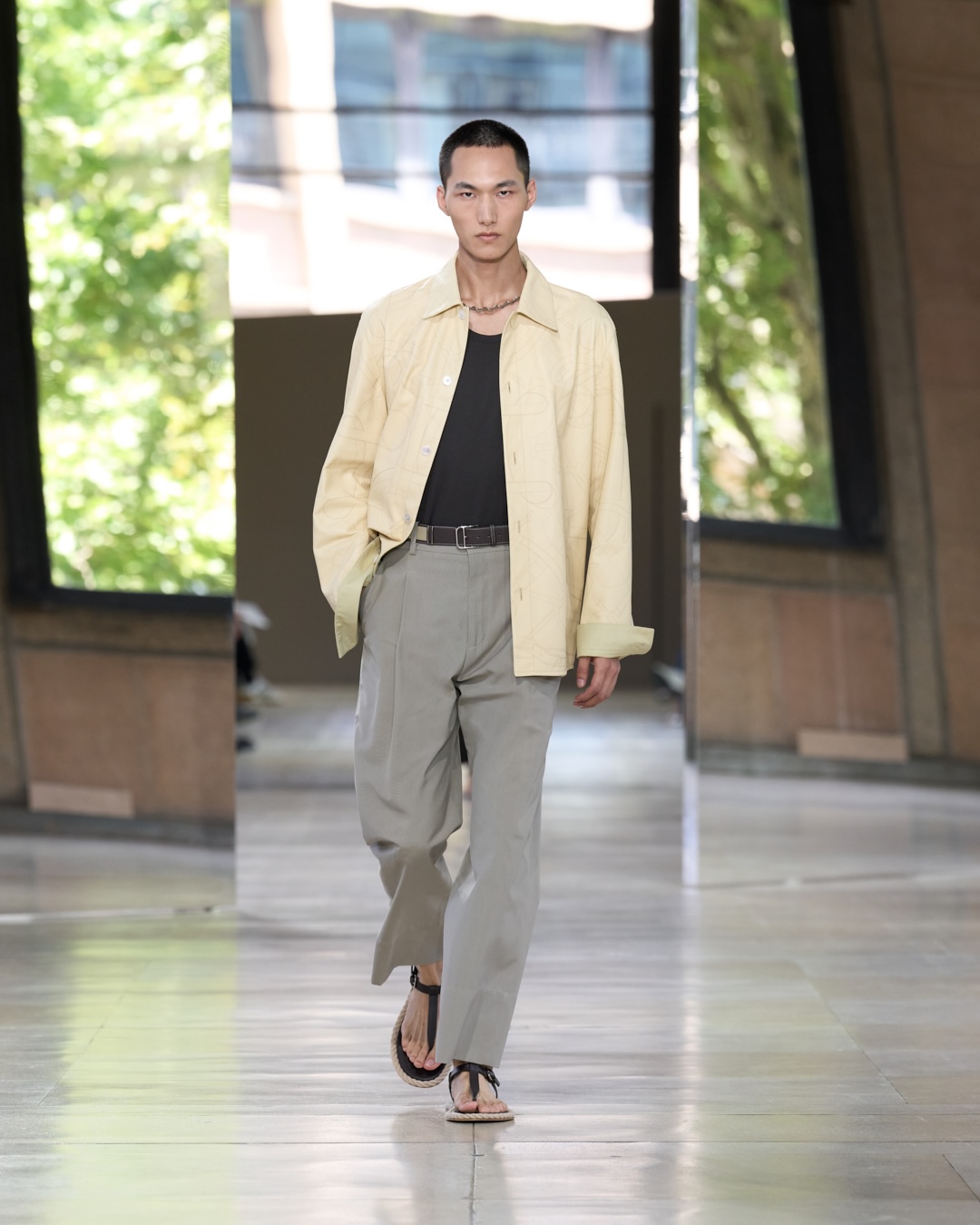
Hermès’ Véronique Nichanian is proof that not all collections need complicated thematics or esoteric inspiration points. For S/S 2026, the designer – who has been at the helm of the Parisian house’s menswear line for 37 years – instead settled on ‘summer in the city’ as the mood of the breezy outing, which unfolded at Paris’ Palais d’Iéna yesterday afternoon. Fittingly, Paris is in the midst of a sweltering heatwave – temperatures are tipping the mid-30s – which made her vision of summertime ease a particularly attractive proposition, with loose-weave knits, open-toed sandals (the sole of which featured loops of rope), and lightweight shirting with tailoring lapels (a warm-weather alternative to the suit) all looking seductive in the heat of the afternoon. Most intriguing, though, were a series of pieces in open-weave leather – a clever way to bring lightness to Hermès’ signature material, allowing it to be worn in the height of summer. JM
Kiko Kostadinov
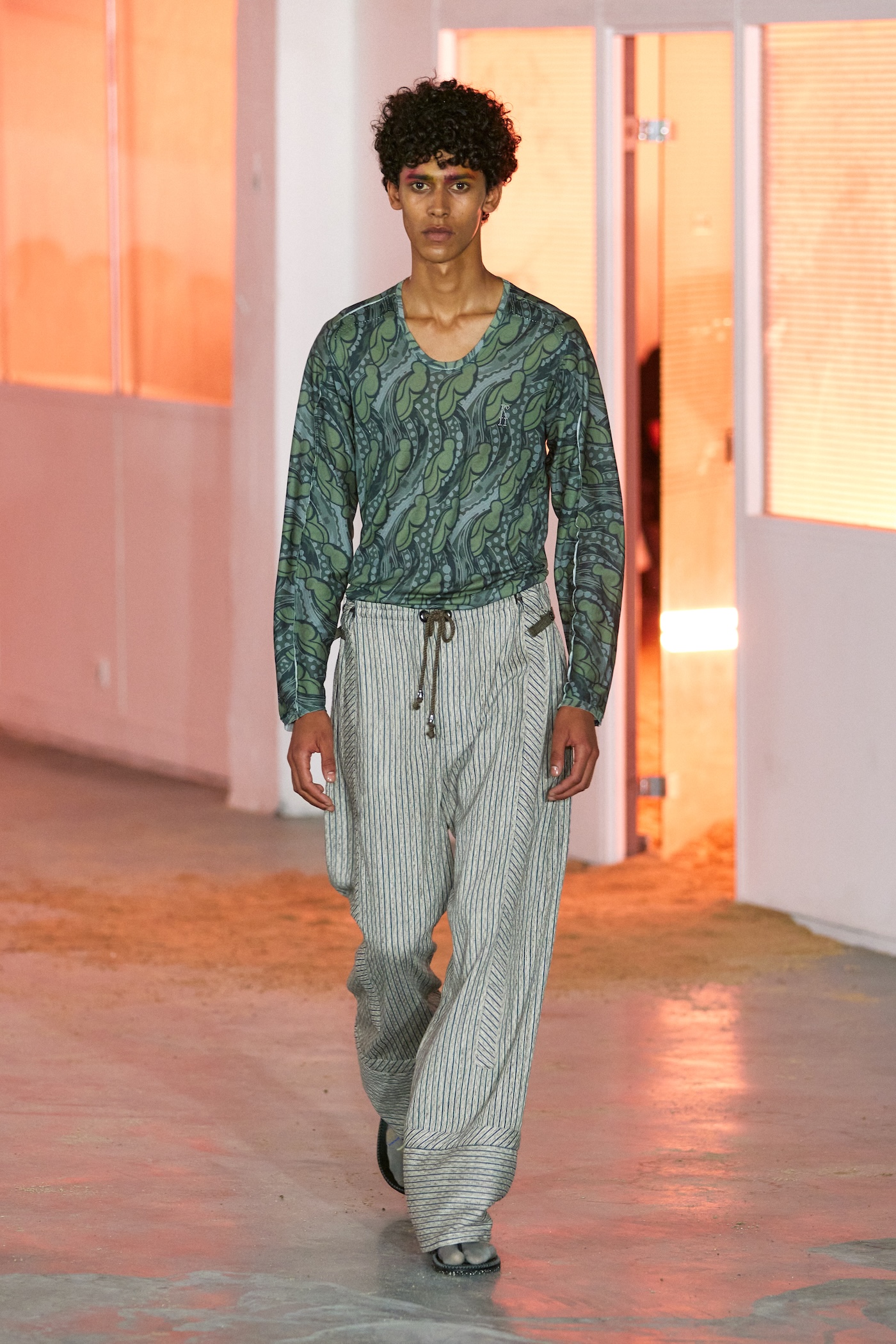
On the penultimate day of the menswear season, Kiko Kostadinov invited guests to a carpark in Paris which he had transformed into a fictional island town. ‘Somewhere small and hard to place, at a remove from the outside world,’ is how the show’s notes described this vague idyll, alongside a poetic line that subtly reworked the opening of Dylan Thomas’s Under Milk Wood to read, ‘It is a moonless summer night. Starless and inky black. You can hear the small town breathing.’
The collection that followed imagined the course of a day unfolding in this quiet place, with easy silhouettes taking after the ‘trusty sometimes unexpected things’ one puts on heading out the door on a day off. The ‘morning’ looks took after Bulgarian military pyjamas, where abstracted paisley twill scoop necks were paired with drawstring crinkled floral cotton bottoms. Afternoon time turned to spontaneous assemblage of workwear shapes in technical stretch twill, Japanese denim and striped shirting. And by night, the excitement of dressing up took over in ruched and cropped blazers, heavily pleated trousers, and K-dark cut long coats newly developed in Japan.
With the idea of replicating the soft weathered feeling of wardrobe favourites, a focus on the tactility of fabrics was evident this season, from romantic light twills and seersucker wools made with Lanificio Luigi Ricceri in Pratofor to jerseys the designer had dyed to take on the crackly effect of Yotiman pottery glazes. It was a confident display of Kostadinov’s off-kilter take on beauty – one that posed the question, if you lived in a town where no one was watching, how would you dress? What clothes might bring you closest to yourself? OB
Dior Men
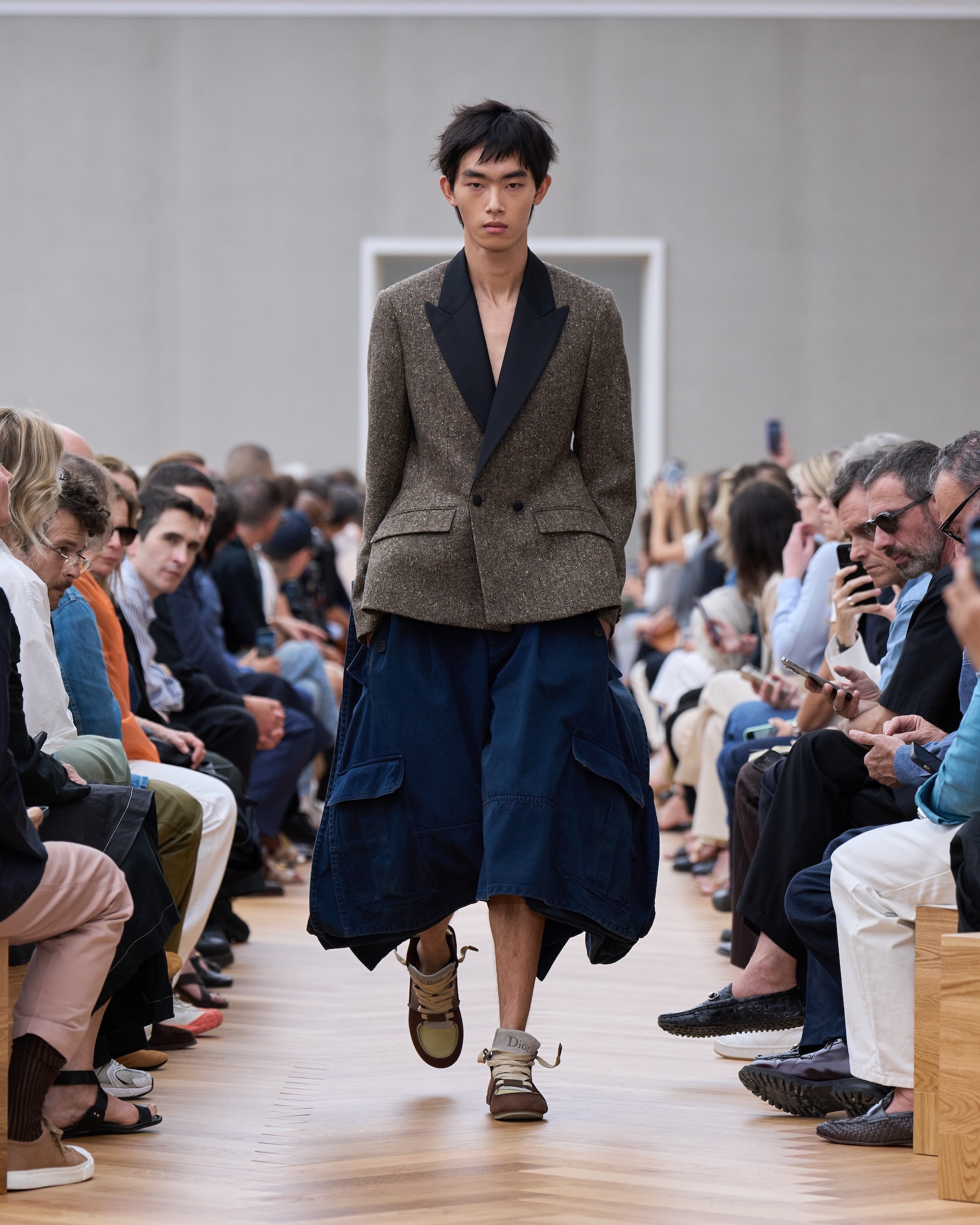
The show space for Jonathan Anderson’s highly anticipated debut collection for Dior was designed to evoke the ’velvet-lined’ interiors and parquet flooring of Berlin’s Gemäldegalerie museum, though here there were just two pictures on display – a duo of still-lifes by 18th-century French artist Jean Baptiste Siméon Chardin (one a bunch of flowers in a Delft vase, the other a bowl of ruby red strawberries). These ‘modest yet beautiful’ paintings had metaphorical heft for Anderson: ‘at a time when art was often concerned with excess and spectacle, Chardin revered the everyday, trading grandeur for sincerity and empathy,’ read the collection notes. With his opening collection, Anderson sought a similar task – to ‘de and recode’ the house of Dior and its synonymy with affluence, formality and grandeur towards something more irreverent, ‘taking joy in the art of dressing up’.
As such, codes of formality – from frock and dress coats to the Bar jacket, alongside schoolboy jumpers, regimental neckties and waistcoats – were dishevelled and skewiff (one inspiration point was an Andy Warhol photograph of Jean Michel-Basquiat wearing a wonky tie over one side of his collar). Other garments worked the other way round – the humble cargo pant was presented supersized with a ruffled construction inspired by an archival gown by Christian Dior. Capes, elongated evening scarves and colourful cable-knit jumpers, here worn slung over the shoulder, captured a feeling of loucheness, while smatterings of embellishment had a Rococo flavour, a historical era which long fascinated Monsieur Dior. ‘
‘You have to decode and recode Dior,’ said Anderson prior to the astute debut. ‘Modernity can be found by not being scared of the past. Everything has to rebirth from itself.’ JM
Willy Chavarria
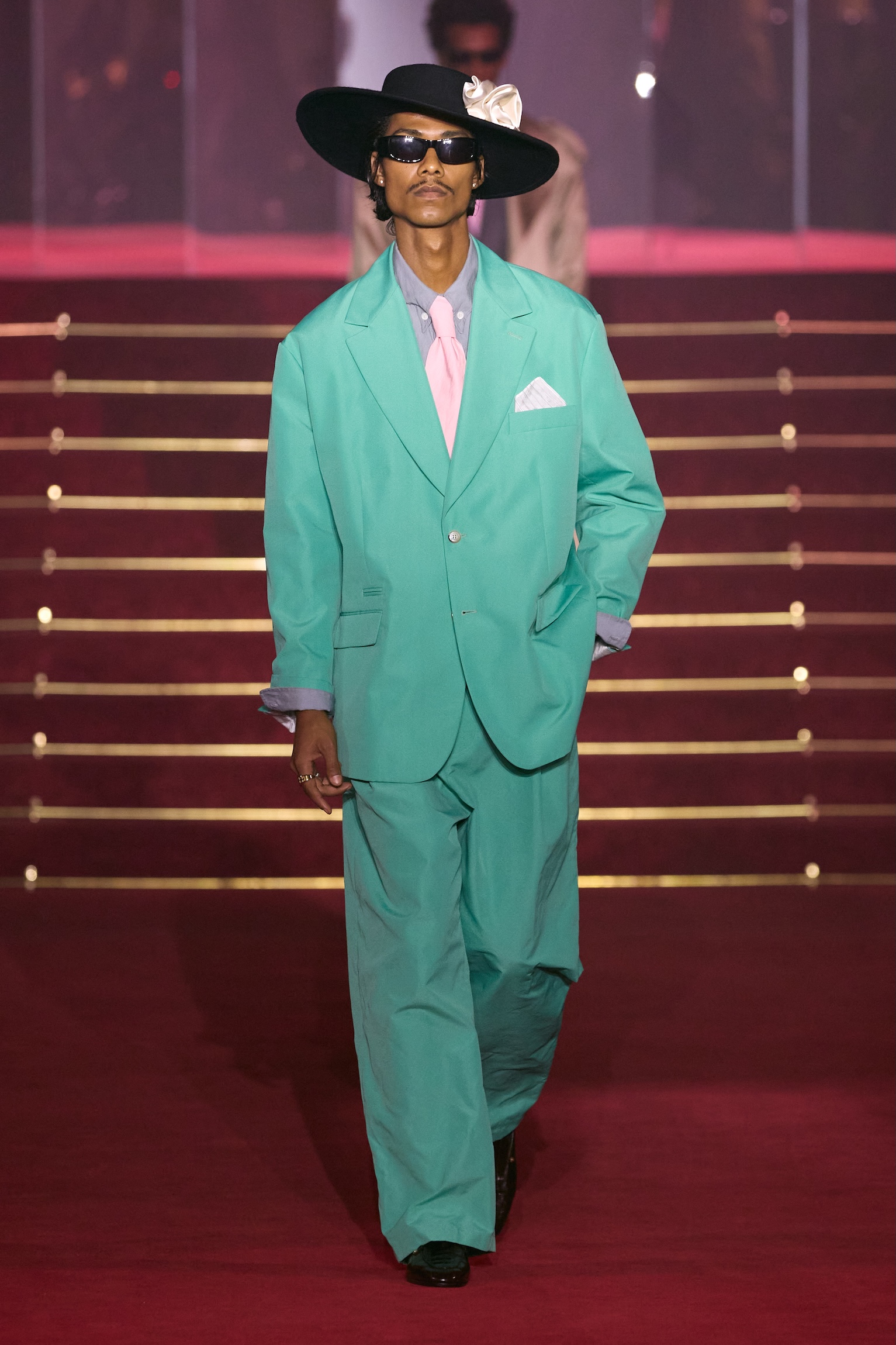
Willy Chavarria isn’t afraid to make a statement – in fact, the New York-based designer has used clothing as a tool to communicate political ideas for nearly a decade. Yesterday afternoon, at the Salle Pleyel concert hall in the east of Paris, he delivered perhaps his most impassioned message yet. The show opened with 35 men wearing white T-shirts made in partnership with the American Civil Liberties Union (ACLU), referencing Salvadoran prisons where people are being detained through unlawful processes. Though this marked the designer’s second collection shown in Paris, it made clear his thoughts were with communities under threat in Trump’s America. ‘With immigrant rights, trans justice, reproductive freedom, and more at risk, we're in courts and communities across the country to protect everyone's rights – we need you with us,’ read the show’s notes.
But Chavarria knows how to rouse emotion – and what followed was an exuberant celebration of his personal story. A love letter to his childhood in Huron, California (the collection’s namesake), the show presented an impressive 74 looks exploring ‘colour as rebellion‘ and the dress codes of his Chicano and Latin heritage. Working in a rich palette of chicle, papaya, bourdin blue, butter yellow, and verdant green, loose nostalgic tailored shapes made from lightweight Italian-milled fabrics honoured ‘immigrant expression and craftsmanship,’ while cinematic trench dresses and puffy satin gowns – made in collaboration with the brand’s Head of Design, Rebeca Mendoza – nodded to the cinematic wardrobes of Pedro Almodóvar and Wong Kar-wai.
In between, Chavarria’s core silhouettes – more relaxed, streetwear-coded – were paired with new supple calfskin accessories that riffed on a ‘W’ motif. Evidence of the designer's breakthrough success in recent seasons appeared in collaborations with adidas originals and luxury French shoemakers Charles Jourdan – but the show made it clear that Chavarria hasn’t lost sight of what matters most. Bravely asking what fashion’s role might be in a world of uncertainty, it was a display of subversive joy from a designer fully attuned to the urgency of now. OB
Comme des Garçons Homme Plus
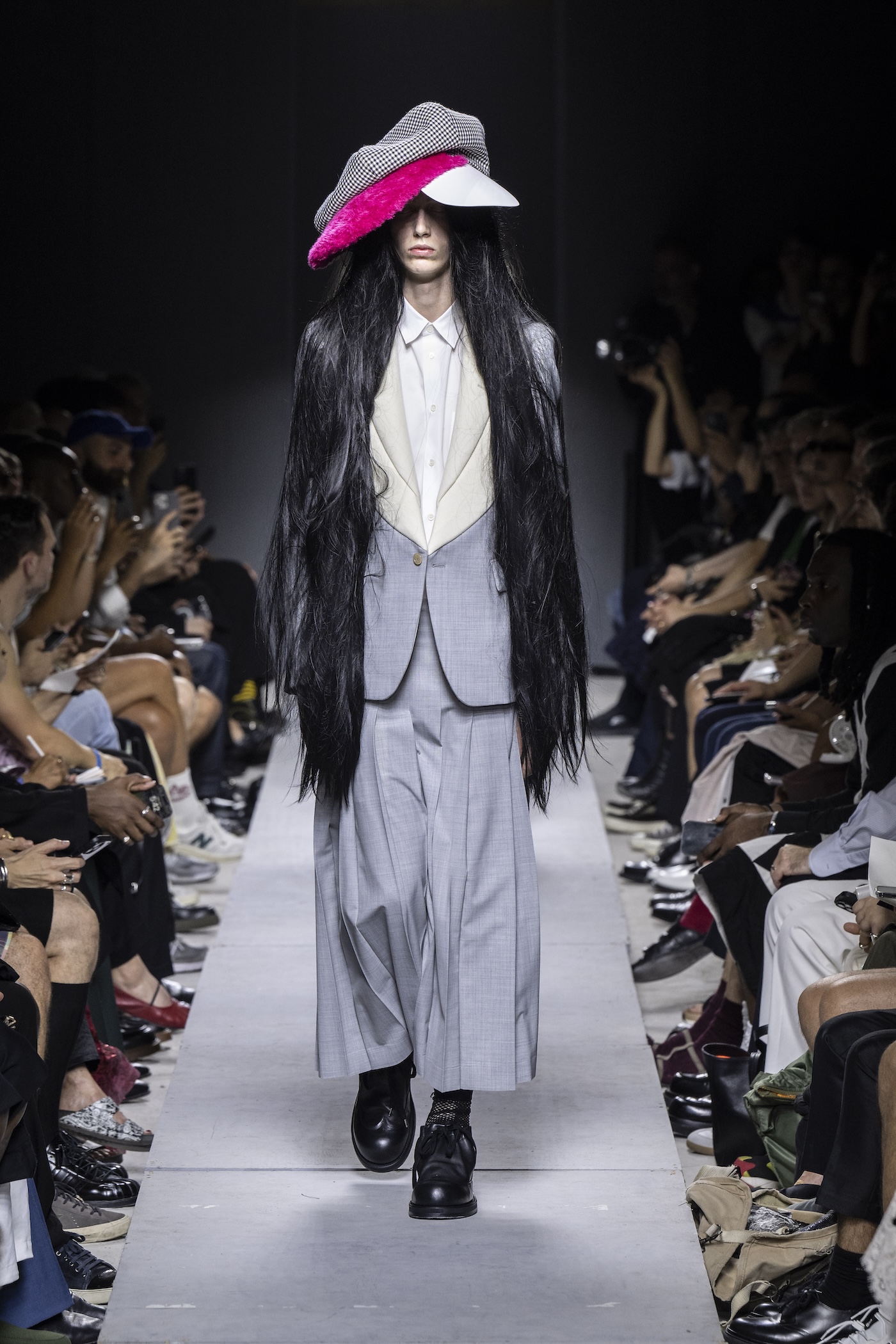
‘I had the feeling that we would really need to get someone powerful like a shaman to come back to lead us to peace, love and fraternity,’ said Rei Kawakubo of her latest outing for Comme des Garçons Homme Plus. Made all the more heady by the sauna-like temperatures of the concrete-walled showspace on Rue Auber, her contemporary shamans trudged the runway in enormous baker-boy caps – some with two peaks, or adorned with turban-like wraps of fabric – from which thick plaits of black hair emerged, the kind of strange apparitions that so often appear on a Comme des Garçons runway (headpieces were by Paris-based Japanese milliner Hizume, while Takeo Arai did this season’s hair and make-up). Kawakubo titled the show ‘Not suits, but suits’, seeing her re-explore the foundational garment in typical vivid ways, from the trippy, skinny-legged tailoring of the opening looks – some of which flared into waterfall-like drapes – to a series of blazers with enormous blown-up labels. Elsewhere, a series of elongated waistcoasts were constructed with pannier-like bulges – an intriguing technique of construction so often employed by Kawakubo in her womenswear collections. JM
Junya Watanabe MAN
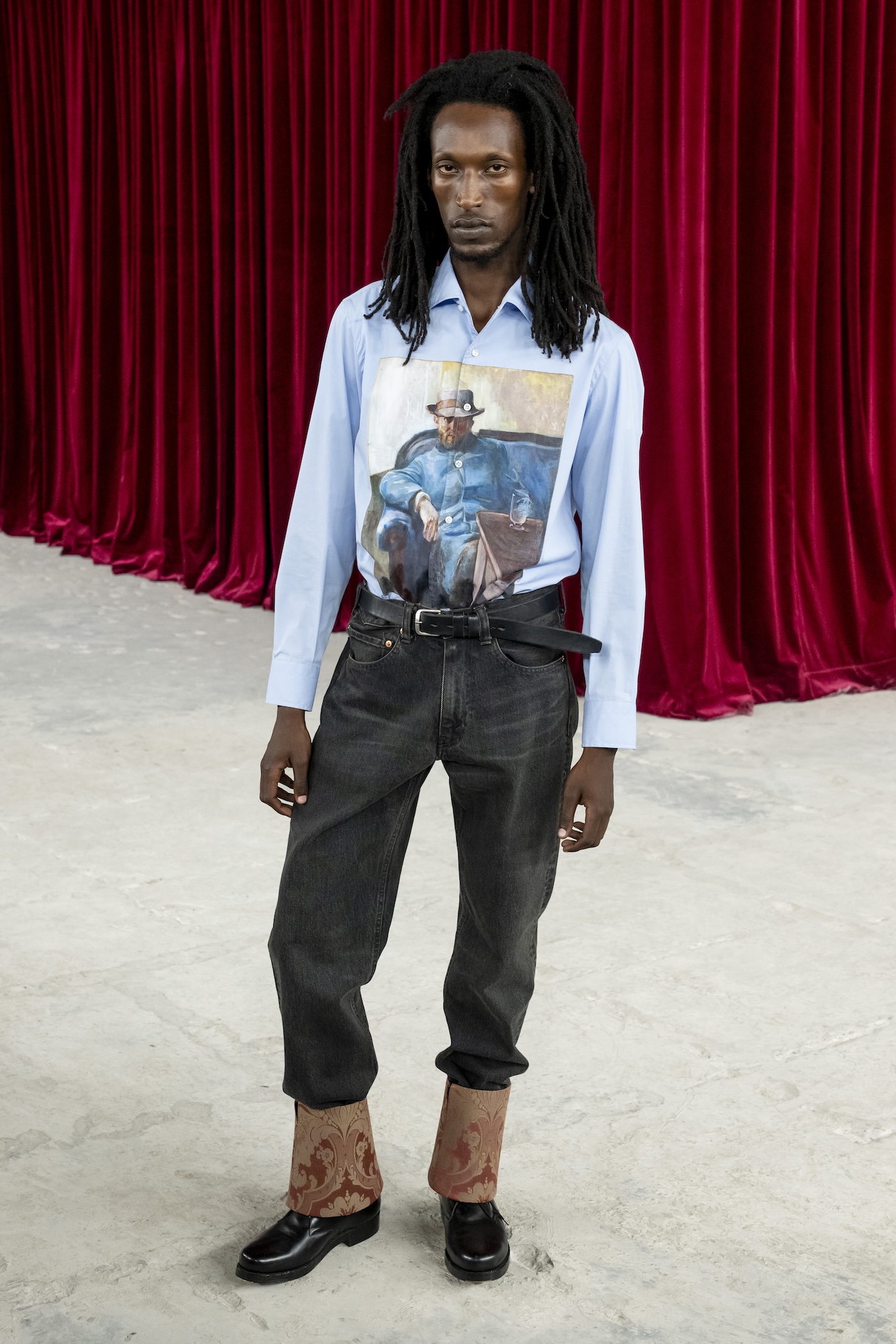
This season, Junya Watanabe said he was interested in the idea of ‘something that is old but feels new, or something new that is born in the process of reproducing old things’. The inspiration here was self-referential: for his A/W 2004 MAN collection, Watanabe crafted tailored suits from vintage upholstery fabrics found in antique markets, and over two decades on, he wanted to create them ‘remake them anew’. Indeed, there was a striking resemblance between the tailored jackets shown on Friday morning and the handful of pictures which exist online from the A/W 2004 show, particularly (like some fashion collections, the images have largely been lost to time). In its evocation of the past, the collection had a feeling of lost beauty: antique jacquards were used once again across a series of blazers, but also patchworked trousers, which in their melange of fabrics captured the passing of time. Elsewhere, there was a grandeur to voluminous shirts with contrast bibs – some adorned with vintage silk scarves, chains, or neckties – while a series of prints of works from artists Elizabeth Peyton, Trove Jansson and Edvard Munch were yet more elements from the past put in new contexts, and reimagined anew. JM
Rick Owens
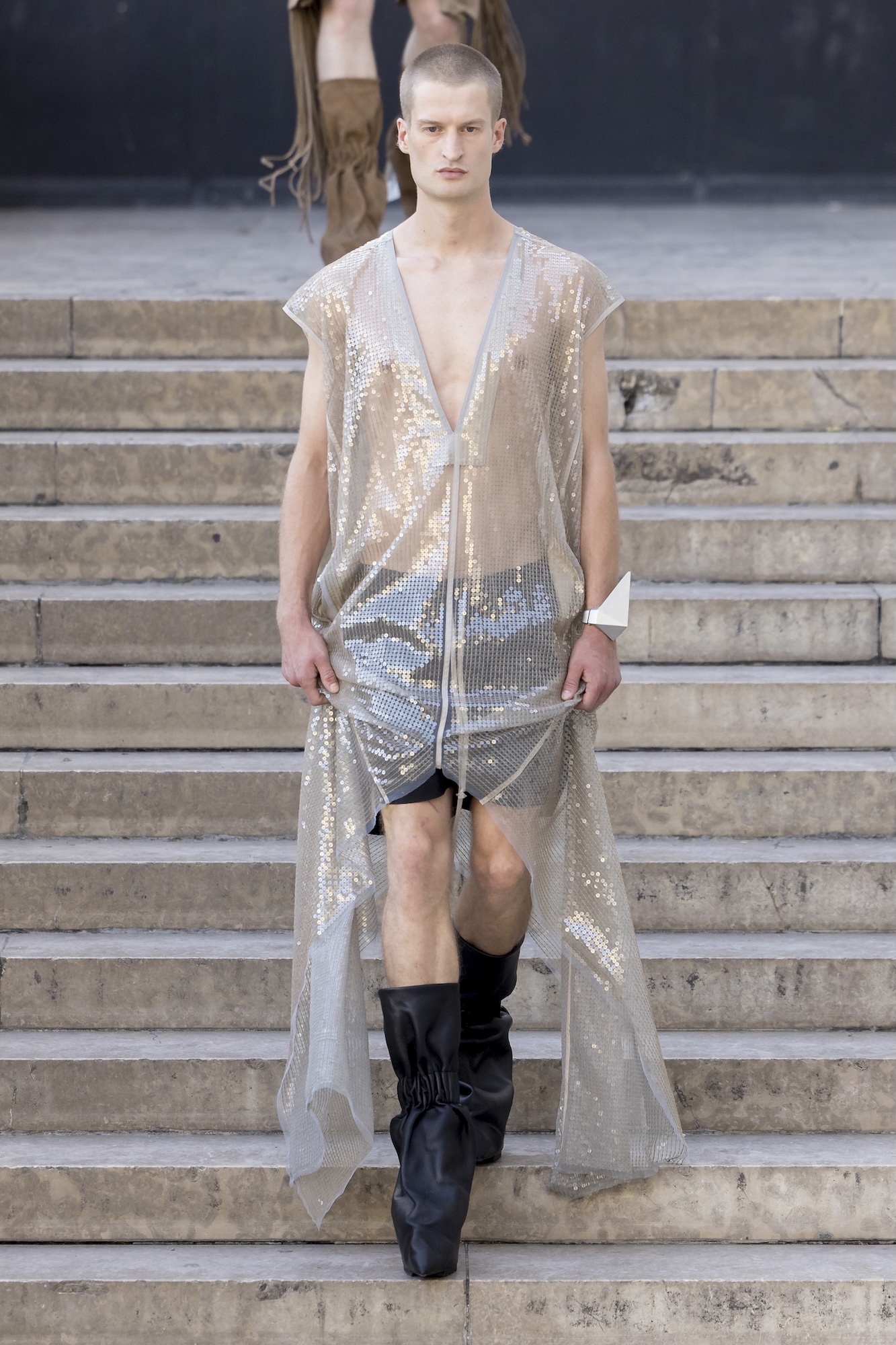
‘Temple of Love’ is the name of a new retrospective from iconoclastic American designer Rick Owens, opening this week at Paris’ Palais Galliera. Spanning the early days of creation in Hollywood, Los Angeles, all the way to the present day, working on the exhibition had got him thinking about the idea of ‘peaking, finality and decline, and I was delighted to lean into it,’ he said in a letter distributed to guests just prior to his S/S 2026 menswear show yesterday evening.
For Owens, the idea of his clothing – particularly the raw ‘glamour and sleaze’ of his earliest work – occupying the hallowed halls of a historic Paris institution, was a juxtaposition which captured a throughline of his work. ‘I have always thought of what I do as a fascination with the denseness of European aesthetic sophistication seen through a filter of American bluntness,’ he said. In the collection, this clash was best encapsulated in a hulking jacket incongruously adorned with sequins. Other garments were printed with photographs of urinals, or purposely destroyed – in its brutal majesty, it was typically Rick.
The all-standing presentation indulged the designer’s penchant for theatrics. Staged at the Palais de Tokyo, an enormous scaffold ‘Temple of Love’ had been erected in the institution’s front pool. From it, models descended into the water below, dunking themselves under its surface before wandering its edges, doused and dripping. At the end, enormous platform boots and all, they hauled themselves upwards once again – a symbolic gesture of Owens’ tenacity and staying power. JM
READ: Rick Owens on his bombastic Paris retrospective, ‘Temple of Love’
Dries Van Noten
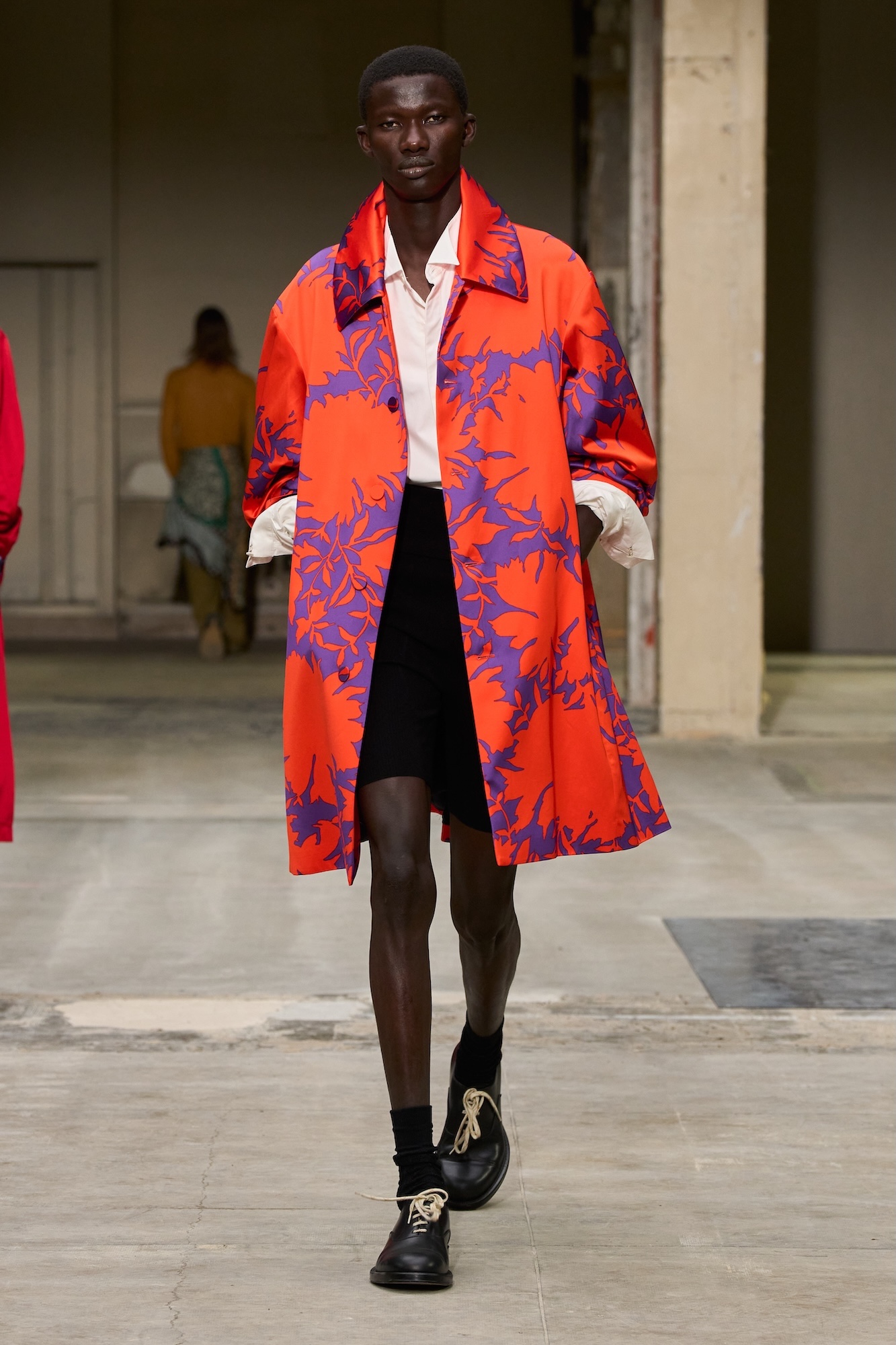
After making his debut at Dries Van Noten earlier this year with an acclaimed womenswear collection, Julian Klausner – who was part of the Belgian brand’s design team before becoming creative director – chose a sparse concrete space on Rue du Faubourg Saint-Antoine to stage his first menswear show, which was titled ‘Just a Perfect Day’ (outtakes from the Lou Reed song provided the show’s soundtrack).
‘Approaching this collection, I had in mind the Dries Van Noten wardrobe that I always loved – traditional yet daring, the different layers of dressing up,’ said Klausner, who took over from the brand’s namesake after his departure last summer. And, with the same sublime strokes of colour and print, this was a collection which cemented the designer as a worthy heir, capturing a feeling of both electricity and ease which was inspired by a photograph of Nirvana wearing the label in the 1990s.
His use of colour was most impressive – clashing tones of red and pink, wide boldly-hued stripes, a shimmering assemblage of sequins and beads – though the collection itself had a seductive summertime ease. Shorts were high and abbreviated, or cut from looser, billowing silk, while a nipped-waist – across tabard tops and tailored T-shirts, as well as the use of colourful cummerbunds – ran throughout. Sleeveless knits, sarongs, plunging polo tops and diaphanous striped shirting captured the same languid mood.
‘A man in love, on a stroll at the beach at dawn, after a party… shirt unbuttoned, sleeves rolled up, the silhouette takes on a new life,’ described Klausner in evocative style. ‘[An] attraction to spontaneous gestures. And, of course, the sound of Lou Reed – just a summer day.’ JM
Amiri
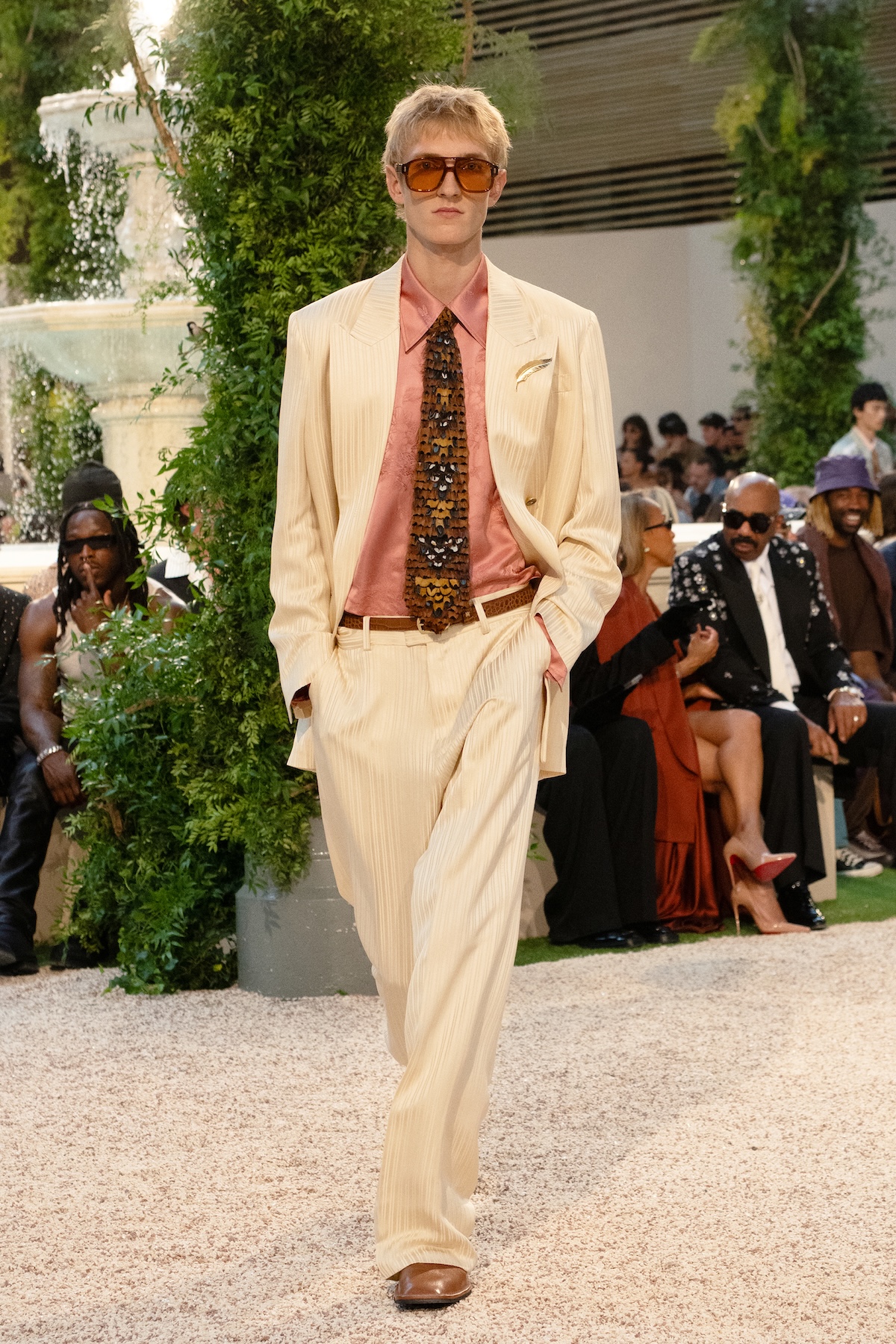
In the early 2010s, American artist Wes Lang spent months living in room 34 at Los Angeles’ infamous Chateau Marmont, where he produced a series of delicately illustrated artworks on hotel notepads. This romantic image – of an artist holed up in a hotel room, sequestered from the world and the rhythms of real life – struck a chord with designer Mike Amiri. Bringing a distinctly Los Angeles-coded idea of glamour to the centre of Paris yesterday, he invited guests into his own hotel mise-en-scène, where models appeared in looks that nodded to the 1970s playboy and the 1990s movie star. Tropical jacquard embroidery evoked hotel wallpaper and soft furnishings, while silhouettes channelled a cast of disparate Hollywood characters one might find buzzing around a lobby at 4am – spangled red carpet-esque gowns, smoking jackets, and shapes that riffed on the plush comfort of bathrobes. With roots in West Coast culture since founding in 2014, and a fixture at Paris Fashion Week Men’s since 2018, the show felt like a natural meeting point between the two cities most important to the brand. OB
IM Men
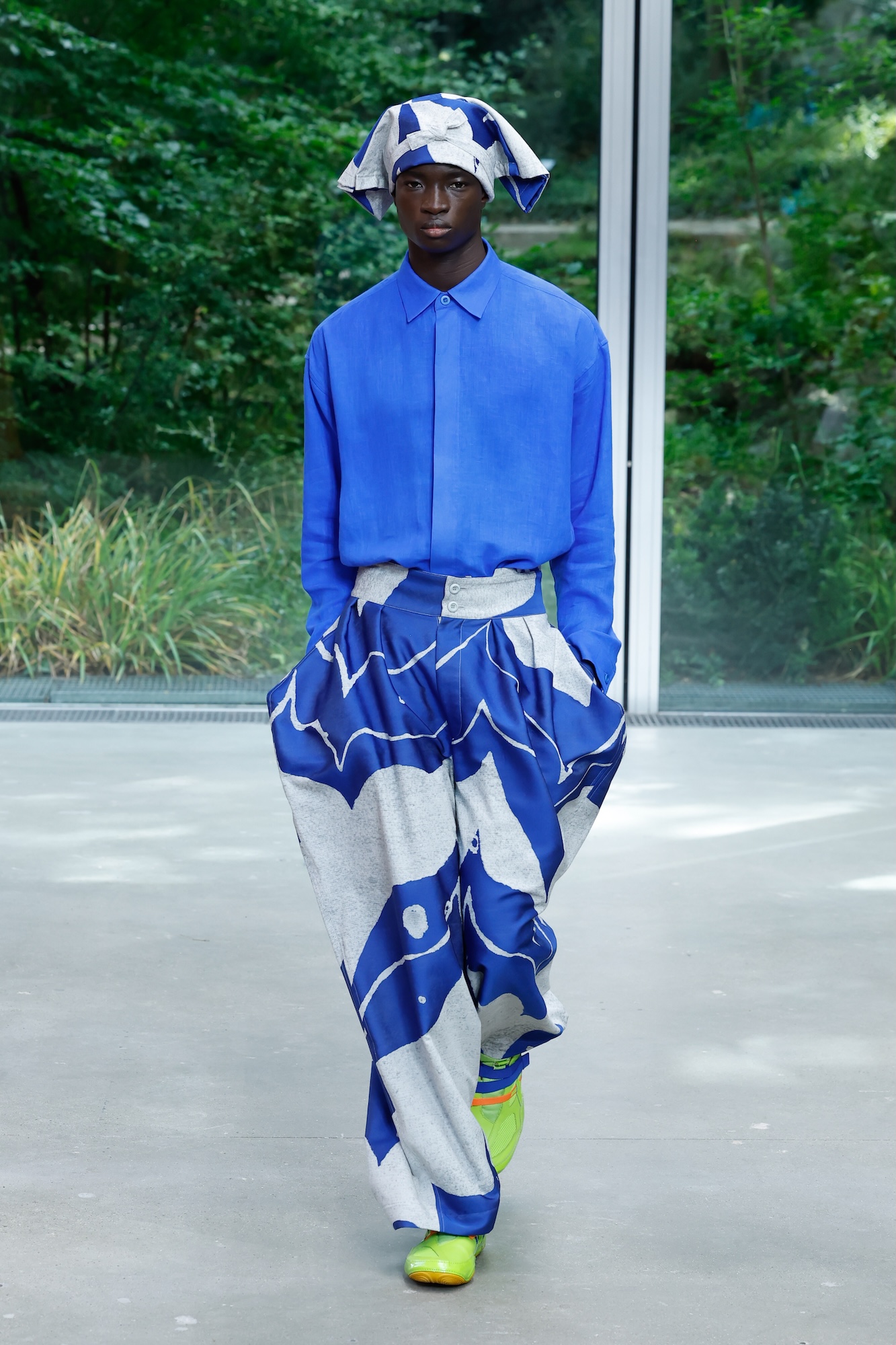
For its sophomore Paris show, IM Men – part of the Issey Miyake umbrella of brands – looked towards pioneering Japanese ceramic artist Shoji Kamoda. Achieving greatness in just two decades (he would die young, aged just 49), his expressive works inspired a collection of intriguing fabric manipulation, bold colour and sculptural silhouettes that played out at Paris’ Fondation Cartier pour l'Art Contemporain. Fabrics were made to recall the surfaces and glazes of Kamodo’s ceramics – from a lustrous metallic material inspired by Gintō (silver pottery), to circular prints informed by ‘Kaiyu’, a glaze made from plant ash – while intricate wrapped and twisted forms captured a sense of dynamism and movement. Indeed, dance was prescient (the collection was called ‘Dancing Texture’), the show beginning with playful choreography designed to look like Kamoda’s ceramics had leapt off the display case and into life. JM
Wales Bonner
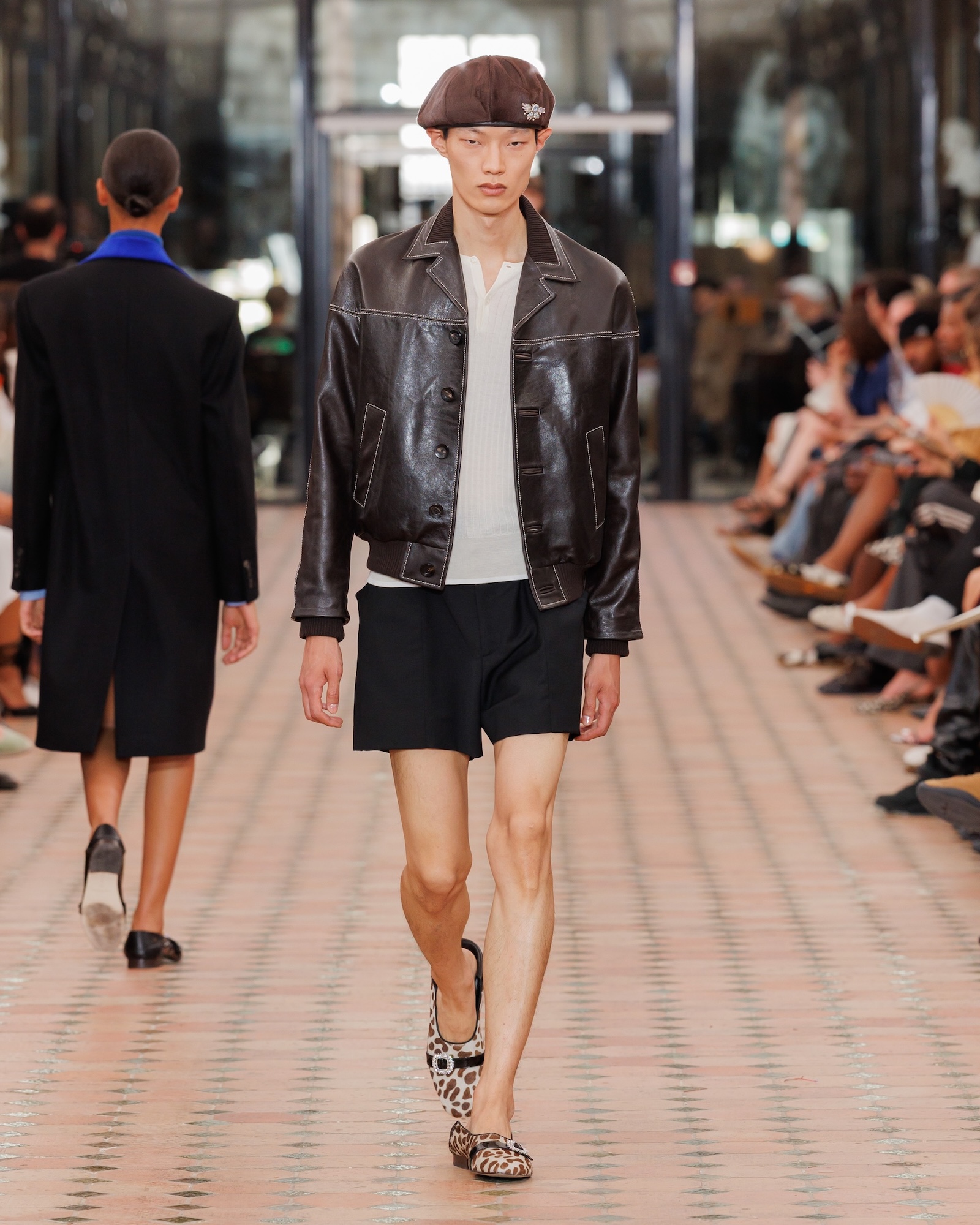
‘A collector of soulful clothing,’ is how Grace Wales Bonner described her protagonist for the season, which marked ten years of her eponymous London-based label. Returning to the Paris runway after a hiatus, the designer said she had been considering the idea of ‘Superfine’ style – a reference to this year’s Met Gala theme, which celebrated Black Dandyism (for the red carpet, she dressed numerous figures, including co-chair Lewis Hamilton). Here, she translated the look into a more expansive wardrobe, drawing particular inspiration from the tenets of British dress: Oxford shirts and henleys, morning suits and ‘Jermyn Street shirting’, a pair of gloves grasped in the hand (on knitwear, she had collaborated with John Smedley, while tailoring was made with Savile Row’s Anderson and Sheppard). A collector’s eye gave looks the moments of richness and opulence that have defined Wales Bonner’s oeuvre since day one: from delicate scales of Art Deco embroidery on a tulle skirt to pearl brooches and patent dress shoes adorned with glimmering crystal buckles. For a title, she chose ‘Jewel’: ‘a celebration of ideas inherited – of influence gathered and guidance received.’ JM
Hed Mayner
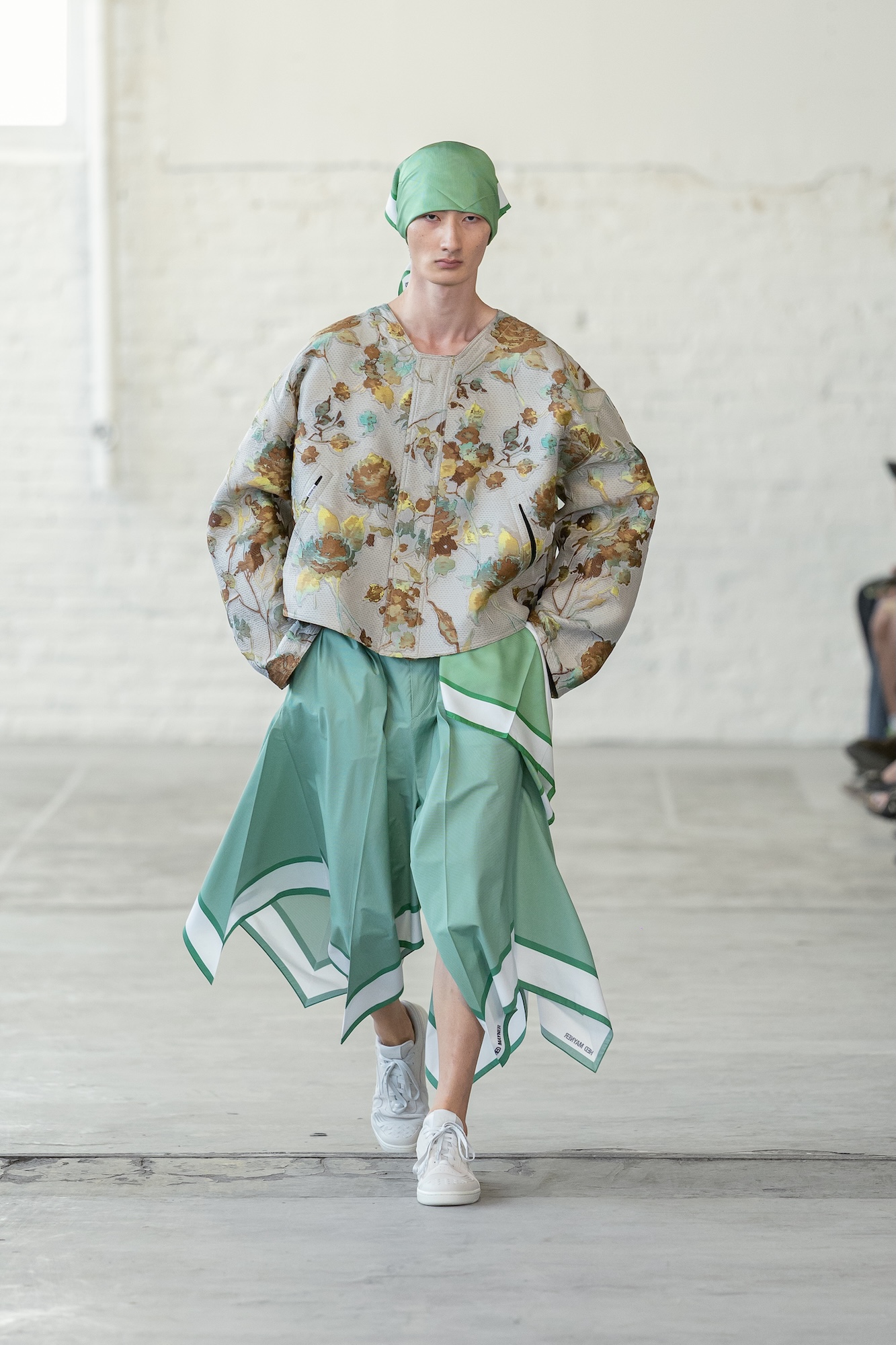
What would happen if garments were emptied of their structure? How would they look? And how would they feel on the body? This is the question, and the challenge, Hed Mayner set himself this season. Shown yesterday afternoon in Paris, the designer’s S/S 2026 collection pursued a new sense of lightness, marking a departure from the bulky, architectural silhouettes for which he is best known. Air moved freely between fabric and skin in a series of loose shapes: handkerchief shorts, feather-light trousers, and fluid tailoring and shirting with the sharp angles of the shoulders removed, so that pieces floated and collapsed around the models as they walked. Elsewhere, stretch fabric blazers were pinched at the waist – accentuating the body Mayner usually conceals – while crunchy cottons, decadent florals, and ginghams evoked the faded beauty of the 1950s. A designer who has spent his career dressing men in powerful, tailored shapes, this season Mayner shed the armour of these structures in favour of something more vulnerable. ‘Something that’s been made to be soft, with confidence,’ read the show notes. OB
Lemaire
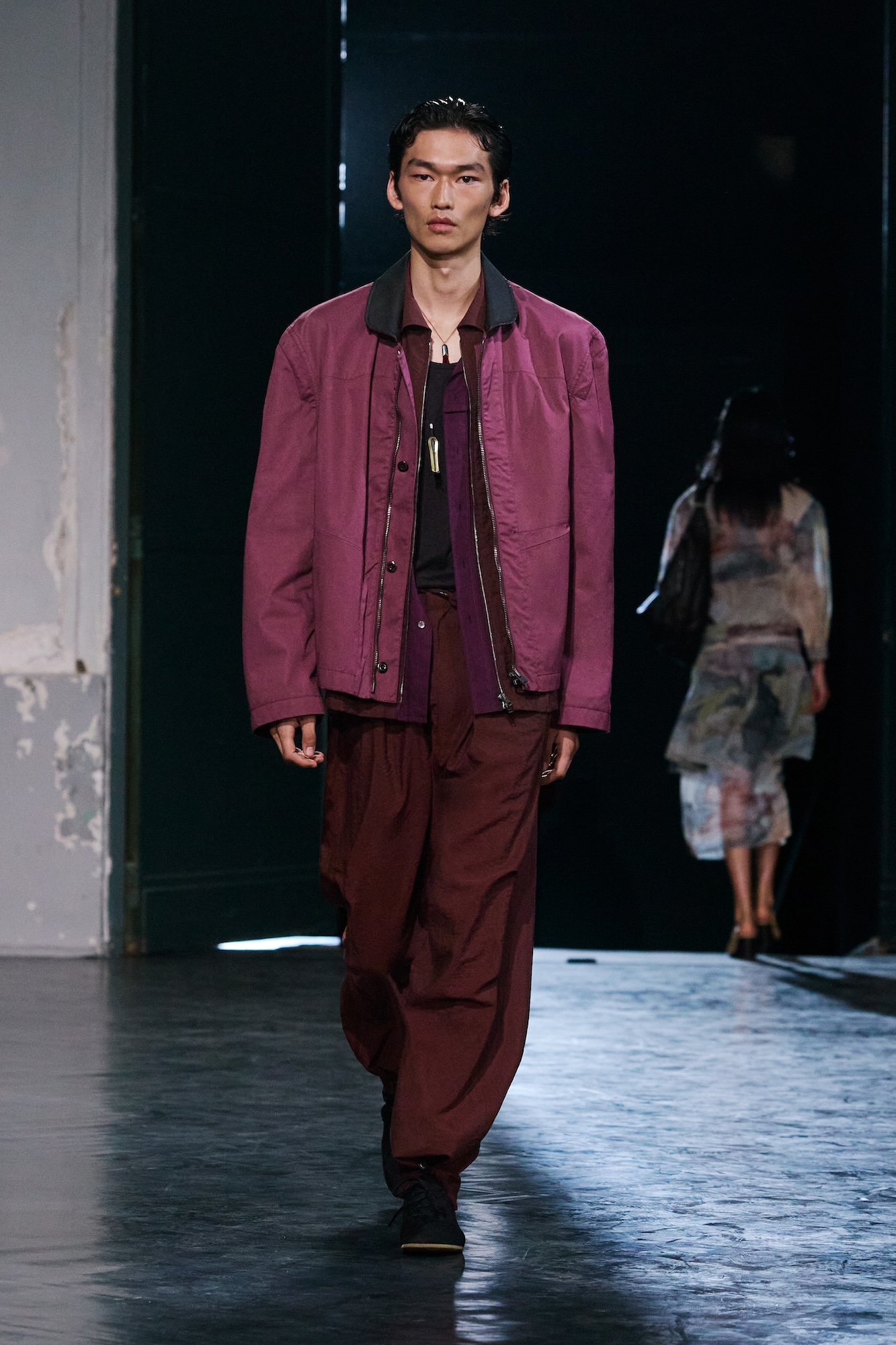
Christophe Lemaire and Sarah-Linh Tran have always eschewed ephemeral trends in favour of crafting a rich and expressive wardrobe built around the idea of personal style – a project continuing with a S/S 2026 collection they described as intuitive, ‘shaped by a distinct sense of personal expression’. Played out against a live performance by Valentina Magaletti and Zongamin (on drums and guitar respectively), the energetic musical accompaniment reflected a collection Lemaire and Tran said was ‘alert and worn with confidence’. Indeed, there was a dynamism to this season’s outing, which, as ever, traversed inspirations – among them work, Western and utility wear, mid-century tailoring and the classic bias cut dress – though was always in the pair’s distinct design vernacular. It was also a little sexier than recent seasons, largely through a play on transparency – for women, this meant diaphanous layers (’like smoke veils’) and deep slits, while handkerchief skirts were designed to ‘suggest scarves tied low on the hips on a hot day.’ JM
Louis Vuitton
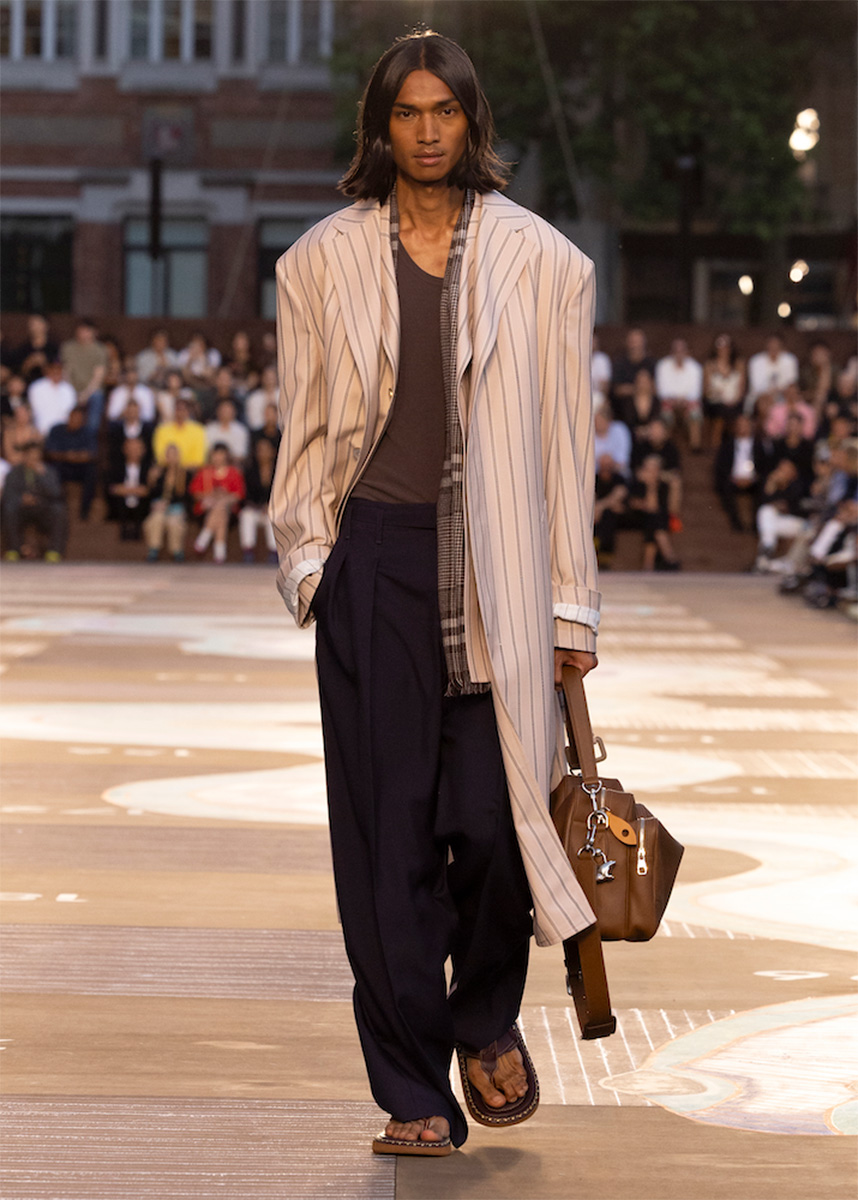
Pharrell Williams deals in spectacle. On Tuesday evening, just as the sun set over Paris, he laid out a 2,700 sq m snakes and ladders board in front of the Pompidou Centre to stage his latest menswear collection for Louis Vuitton. There was a floor-shaking soundtrack, performed live by Virginia-based Voices of Fire and l’Ochestre du Pont Neuf, and a roll call of celebrities – including Beyoncé and Jay-Z – which prompted frenzied screams from the crowds that gathered around the piazza’s edges. Even the pigeons dramatically took flight at the show’s start.
This season, India was a loose influence for the collection, which continued to posit Williams’ take on the global dandy – a sleek but eclectic vision of a world traveller, which largely sees the designer riff on menswear archetypes, from the suit to the working uniform. He worked with Studio Mumbai on the show’s set, and nods to the country – which Williams said has ‘always been an inspiration’ – came in paduka-style footwear, woven and tasselled trims, cricket jumpers, and the recreation of a Louis Vuitton luggage set (originally created by Marc Jacobs) for Wes Anderson’s India-set 2007 movie, The Darjeeling Limited. ‘We are a house of travel,’ said Williams, who had undertaken research trips to Mumbai, Jaipur and Delhi with his team prior to creating the collection.
In terms of silhouette, there was a satisfying languidity to the season’s tailoring – which made up the majority of the collection – with fold-front or gently flared trousers capturing a sense of ease which has occasionally felt missing in his past collections. He was also strong when playing with workwear – uniform striped shirting, polo shirts and cargo pants all had real-world appeal – while moments of superlative craft, like a hoodie constructed from tiny hand-sewn panels of mink, was a reminder of the power of the Louis Vuitton atelier, one which Williams is now harnessing to impressive effect. JM
Auralee
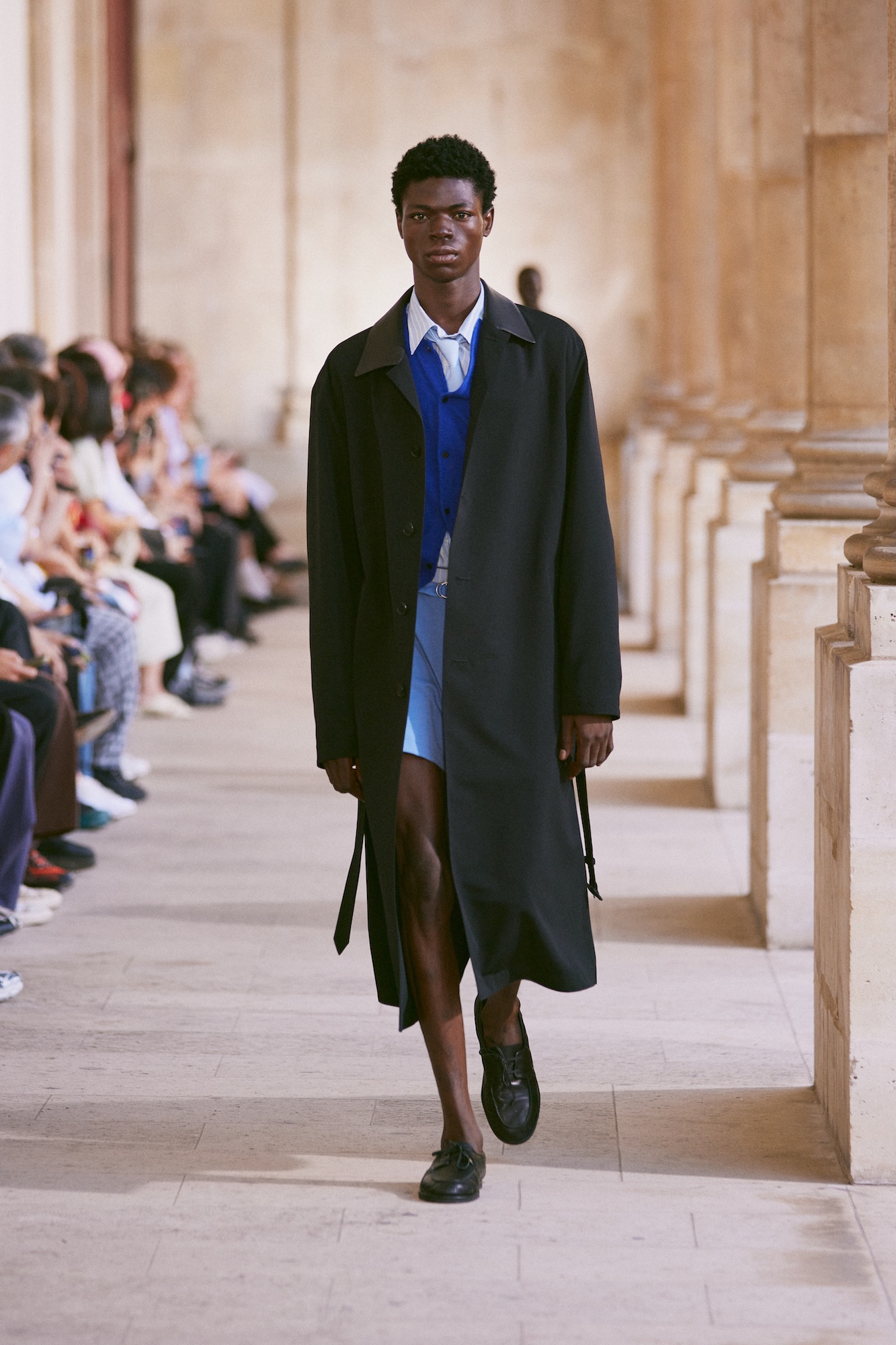
Sandwiched between the two high-budget headliners of the day – Saint Laurent and Louis Vuitton – Auralee’s effortless S/S 2026 display felt like a breath of cool air. Staged in the serene courtyard of the National Archives Museum in the Marais, Japanese designer Ryota Iwai’s show focused less on a concept than on a particular time of year – one when flashes of warmth surprise us in the day, while the nights can still be bristlingly cold. Noting how unpredictable weather can make outfits feel ‘mismatched’ and ‘undone’ – ‘loosening us up a little’ – the collection that followed was a masterclass in Iwai’s quiet language of chic.
In practice, this sense of seasonal discombobulation played out in classically tailored, hand-sewn outerwear in autumnal tones, thrown over airy shirting, organza silk dresses, and cropped shorts in sunny hues – a nod to swimwear and beachside ease. The brand’s much-loved knitwear appeared in Japanese sunset reds and Yves Klein blues, crafted from luxurious cashmeres and wools. Accessories, meanwhile, exuded the laid-back feeling of holidays – bucket hats, drawstring bonsacs, and sleek flip-flops.
While this collection was inspired by a particular time of year, Iwai founded Auralee in 2015 with a more precise time in mind – dressing in the soft, clarifying light of morning (Auralee translates as ‘the land that lights up’). A celebration of the painstaking craft and quiet beauty that has earned the brand its cult following over these years, yesterday in Paris felt like a luminous, confident toast to a fresh decade ahead. OB
Saint Laurent
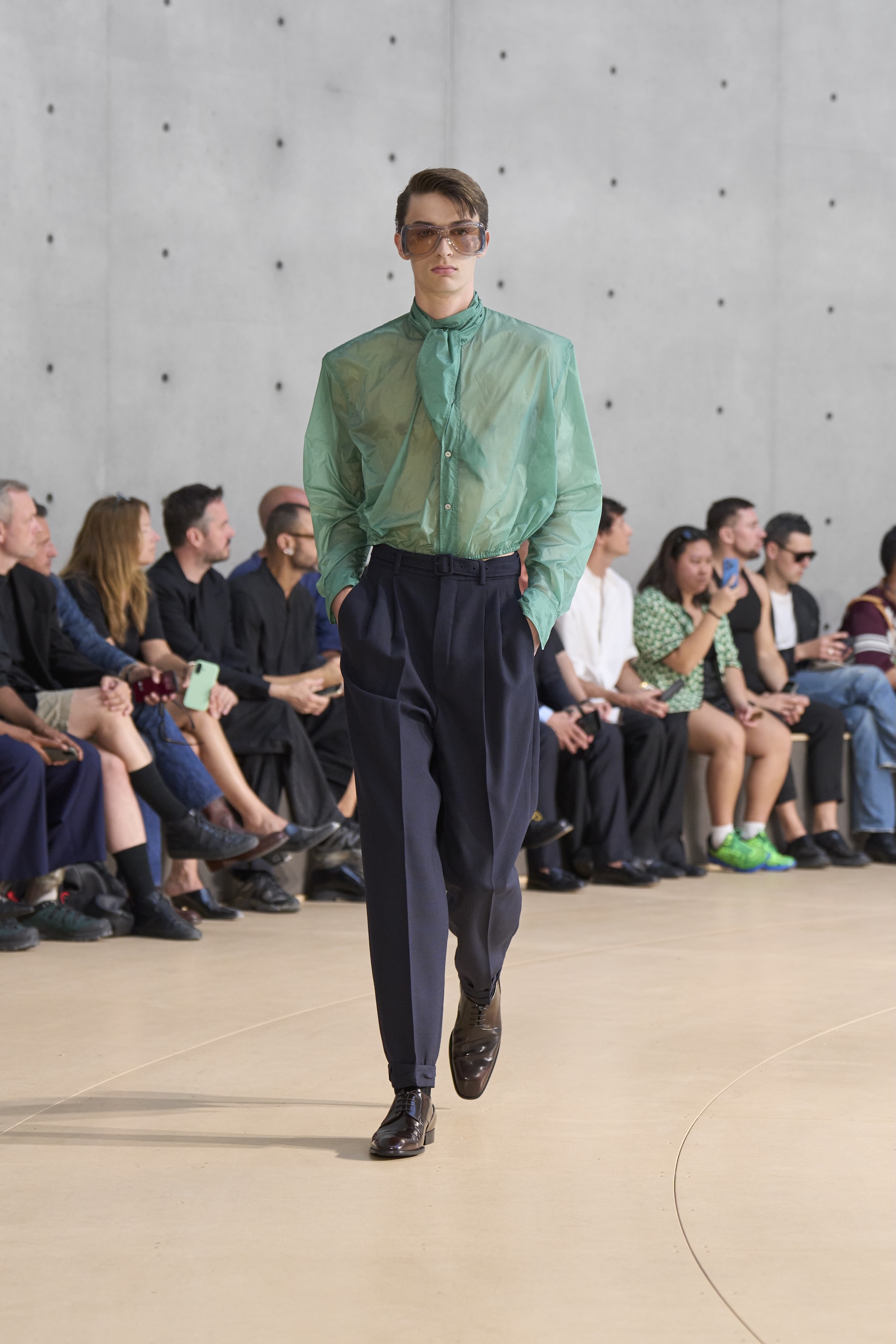
Staged in the bright light of the afternoon – a rarity for a Saint Laurent show – Anthony Vaccarello’s S/S 2026 menswear show took place in the rotunda of Bourse de Commerce – Pinault collection, around an installation by Céleste Boursier-Mougenot currently on show at the Paris gallery. Comprising an enormous round pool on which floated hundreds of porcelain bowls, it set the stage for a collection of ‘ease’ and ‘escapism’ that centred on an imagined trip from Paris to Fire Island – ‘where escape becomes elegance, and desire becomes a language’.
Clothing channelled the setting’s daydream-like mood with abbreviated shorts, pyjama sets and colourful layers of silk and nylon meeting wide-shoulder shirts, blazers and ties for a continuance of Vaccarello’s riff on the 1980s working uniform (though here, it was rendered with new lightness). In part, the designer said that the collection was an homage to a generation of queer artists – contemporaries of Yves Saint Laurent – who escaped New York City in the 1970s and found sexual liberation and kinship among Fire Island’s dunes (the locale, off the coast of Long Island, New York, has been known for its queer community since the 1920s).
‘This collection pays tribute to a lost generation, to the artists – [Larry] Stanton, [Patrick] Angus, [Darrel] Ellis – who gave a face to silent desires,’ said Vaccarello, with gestures of concealment and exposure running through the collection. ‘[It is] inspired by a time when desire was style, when beauty served as a shield against emptiness. The collection explores this subtle sensuality, that fragile moment when one dresses as much to reveal oneself as to conceal.’ JM
Stay tuned for live coverage of Paris Fashion Week Men’s here.
Jack Moss is the Fashion Features Editor at Wallpaper*, joining the team in 2022. Having previously been the digital features editor at AnOther and digital editor at 10 and 10 Men magazines, he has also contributed to titles including i-D, Dazed, 10 Magazine, Mr Porter’s The Journal and more, while also featuring in Dazed: 32 Years Confused: The Covers, published by Rizzoli. He is particularly interested in the moments when fashion intersects with other creative disciplines – notably art and design – as well as championing a new generation of international talent and reporting from international fashion weeks. Across his career, he has interviewed the fashion industry’s leading figures, including Rick Owens, Pieter Mulier, Jonathan Anderson, Grace Wales Bonner, Christian Lacroix, Kate Moss and Manolo Blahnik.
-
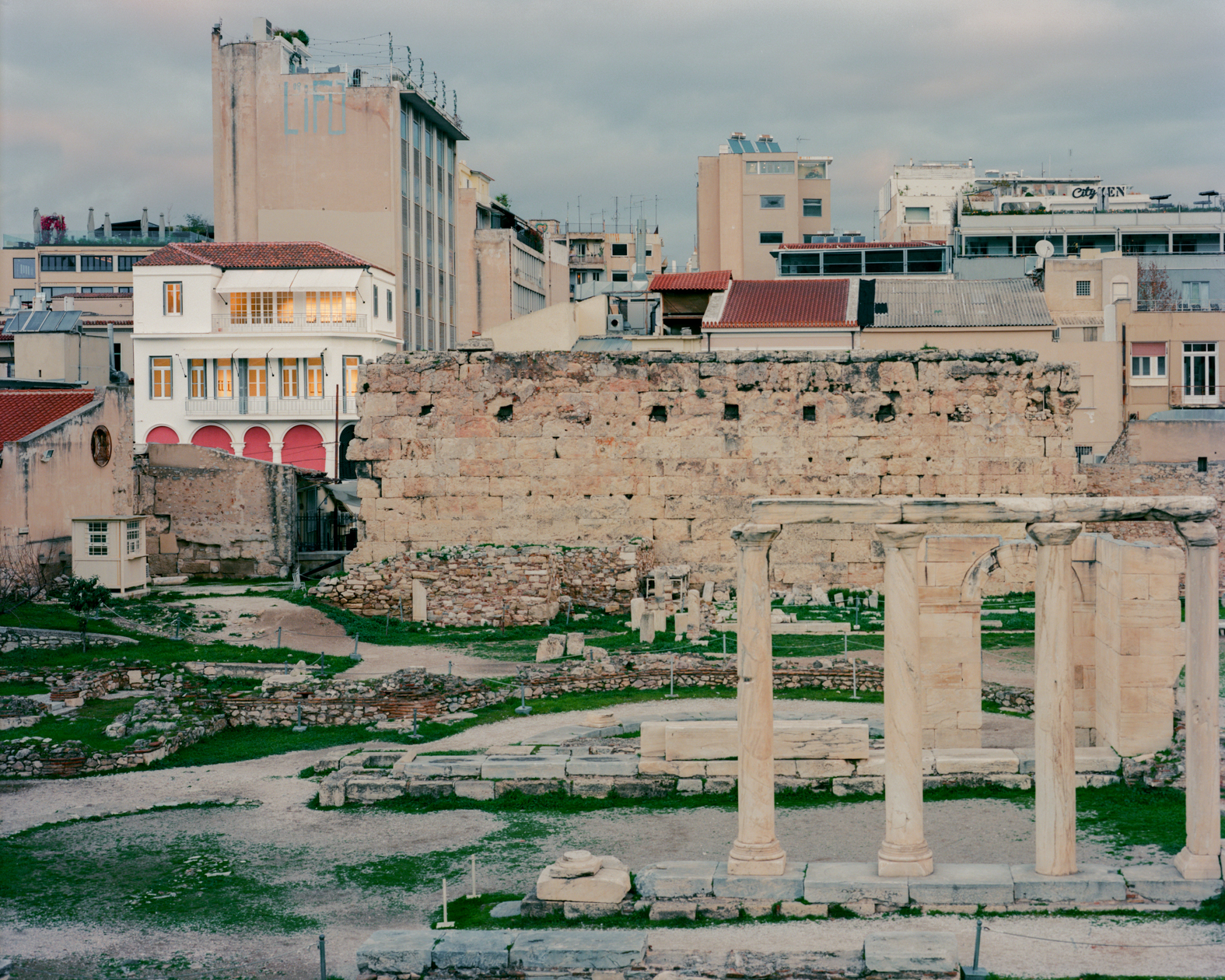 A new Athens gallery is a celebration of old and new, a stone's throw from the Acropolis
A new Athens gallery is a celebration of old and new, a stone's throw from the AcropolisNew Athens gallery Melas Martinos by Local Local is a contemporary art space, a stone's throw from the Acropolis, in the Greek capital's Monastiraki neighbourhood
-
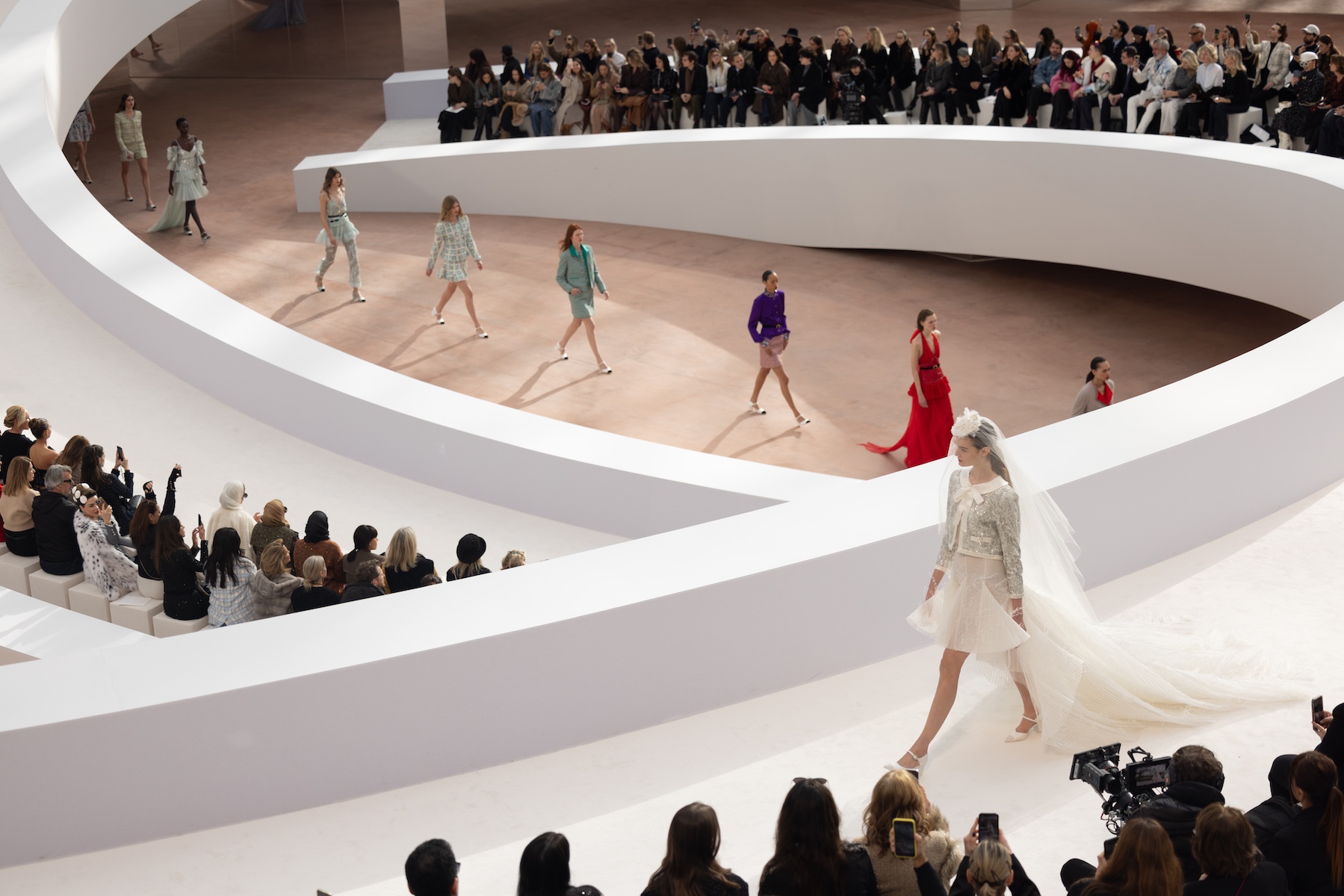 Haute Couture Week A/W 2025: live updates from the Wallpaper* team
Haute Couture Week A/W 2025: live updates from the Wallpaper* teamFrom 7-9 July, Haute Couture Week A/W 2025 arrives in Paris. Follow along for a first look at the shows, presentations and other fashion happenings, as seen by the Wallpaper* editors
-
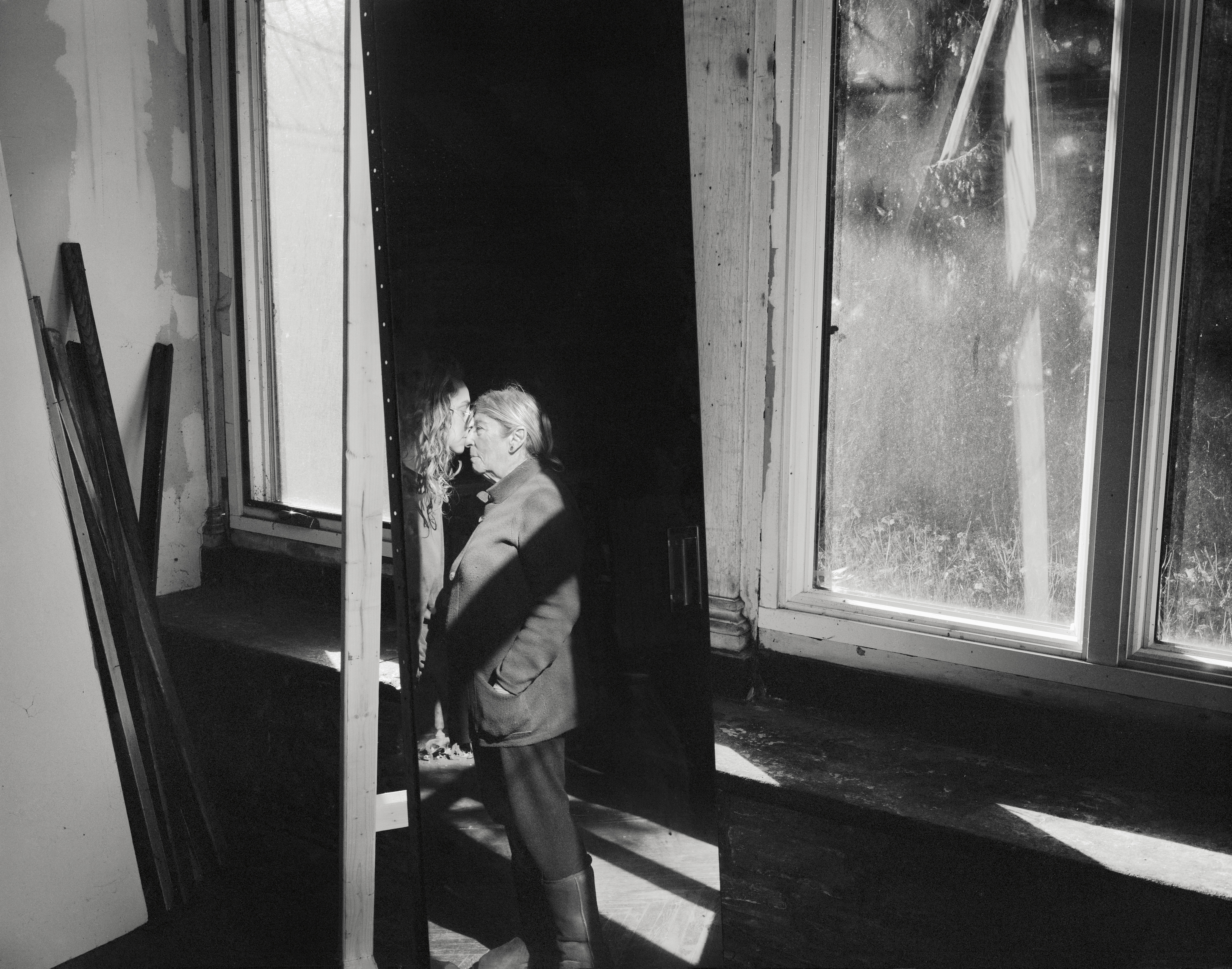 Boundaries between art and life dissolve in Katherine Hubbard's intimate documentation of her mother's illness
Boundaries between art and life dissolve in Katherine Hubbard's intimate documentation of her mother's illnessIn 'The Great Room', Katherine Hubbard merges caregiving for her mother with an unflinching documentary of the process
-
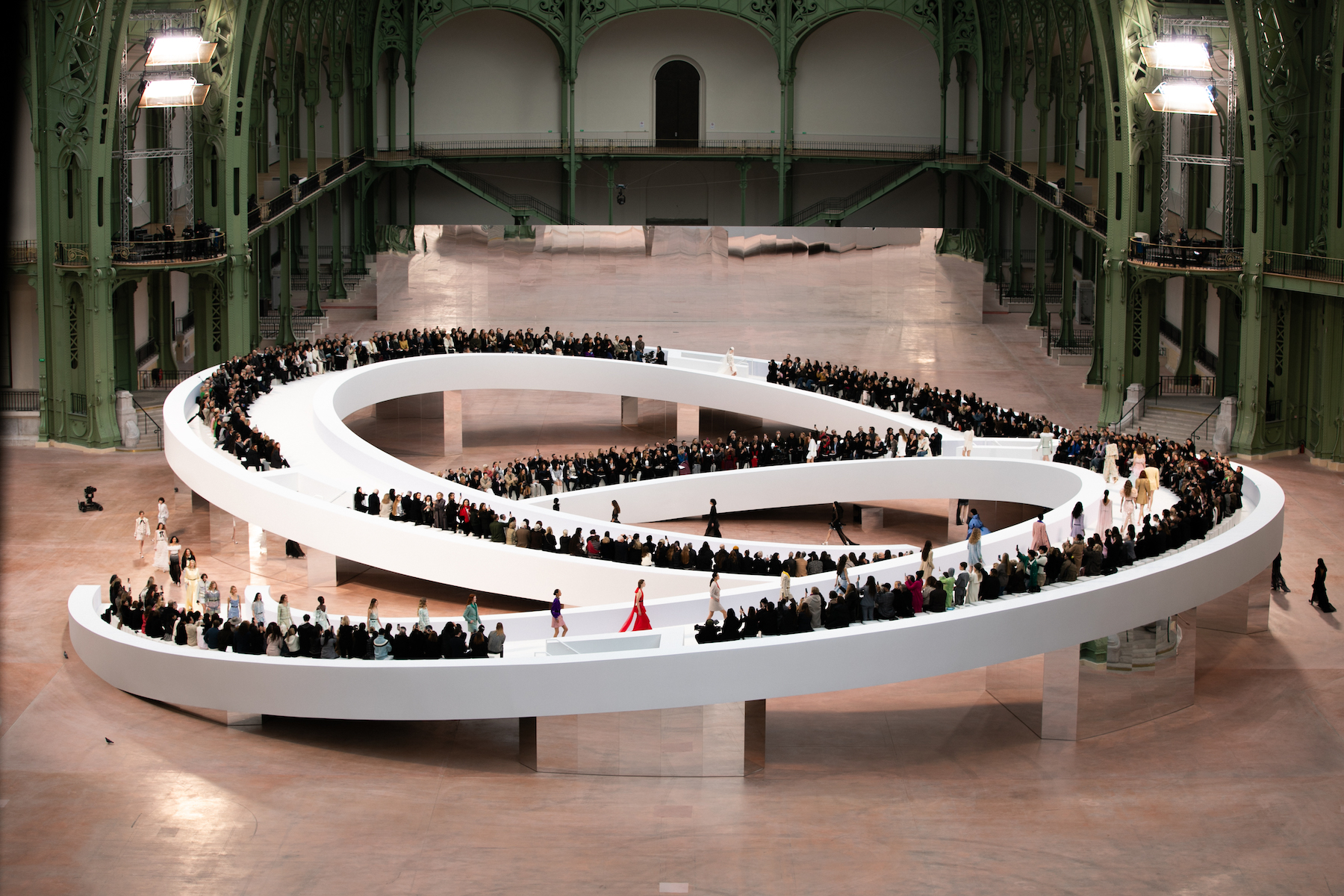 Haute Couture Week A/W 2025: what to expect
Haute Couture Week A/W 2025: what to expectFive moments to look out for at Haute Couture Week A/W 2025 in Paris (starting Monday 7 July), from Glenn Martens’ debut for Maison Margiela to Demna’s Balenciaga swansong. Plus, ‘new beginnings’ from JW Anderson
-
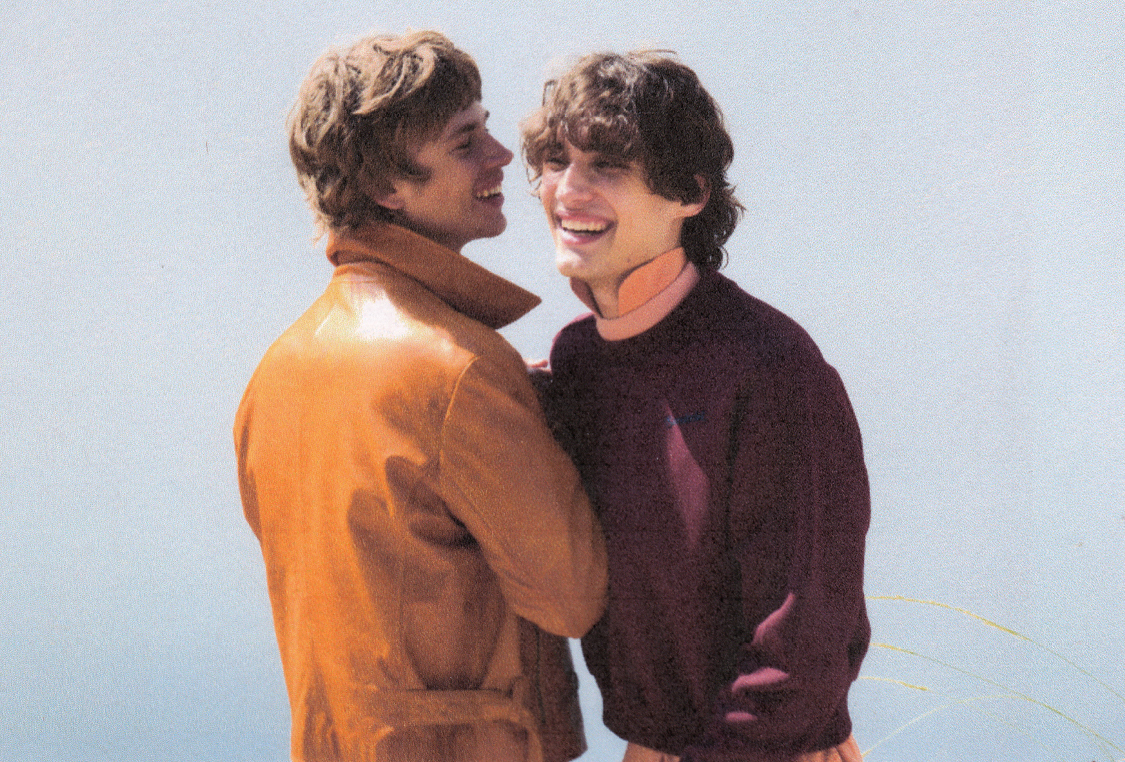 The collections you might have missed this S/S 2026 menswear season
The collections you might have missed this S/S 2026 menswear seasonBetween the headliners in Paris, Milan and Florence, a few off-schedule displays are deserving of honourable mention – from Martine Rose’s sexually-charged portrait of Kensington Market to Sander Lak’s appointment-only namesake debut
-
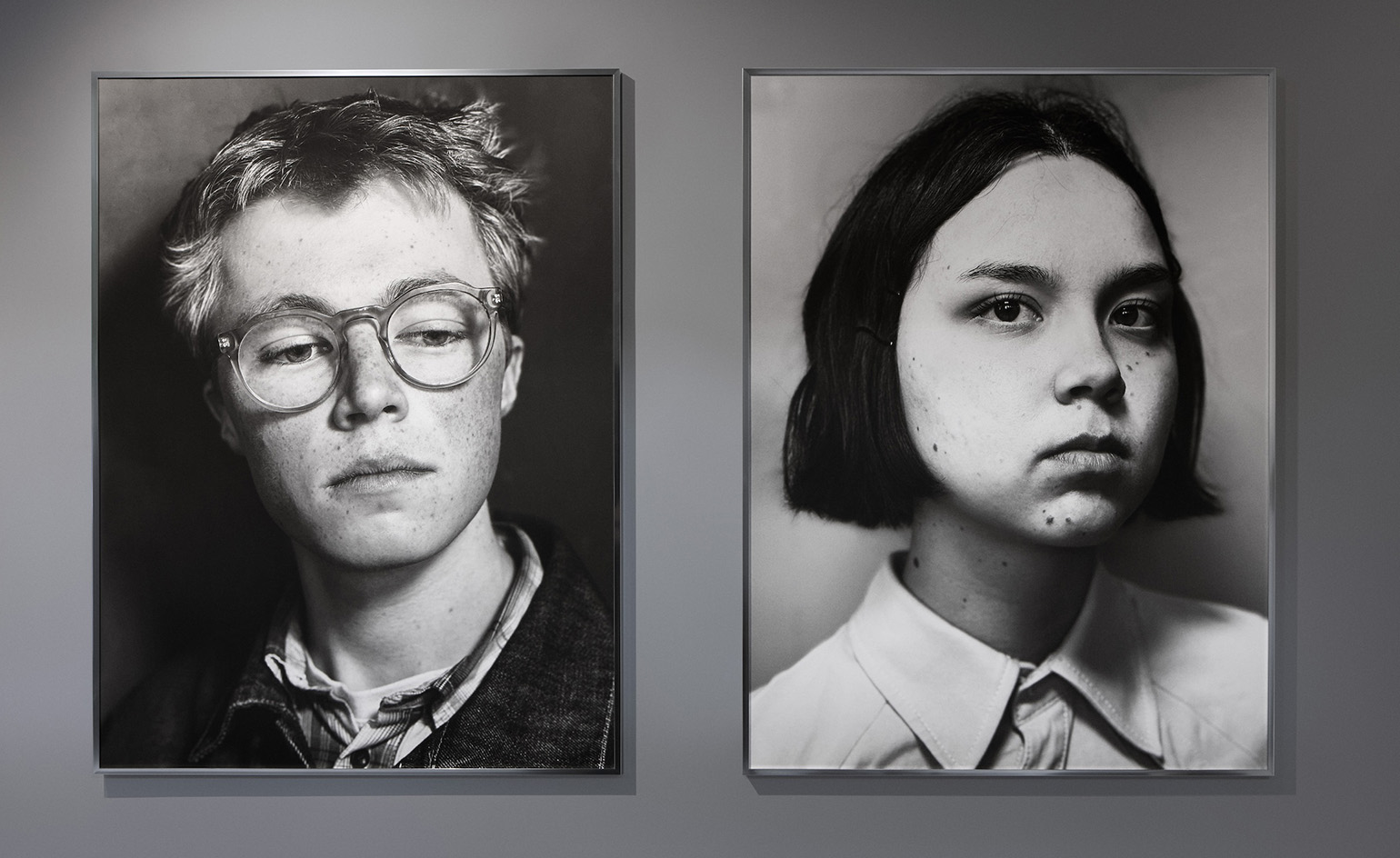 ‘They gave me carte blanche to do what I want’: Paul Kooiker photographs the students of Gerrit Rietveld Academie for Acne Studios
‘They gave me carte blanche to do what I want’: Paul Kooiker photographs the students of Gerrit Rietveld Academie for Acne StudiosHeralding the launch of a new permanent gallery from fashion label Acne Studios, the celebrated Dutch photographer’s new body of work praises the bravery of ‘people who choose to go to an art school at a time like this’
-
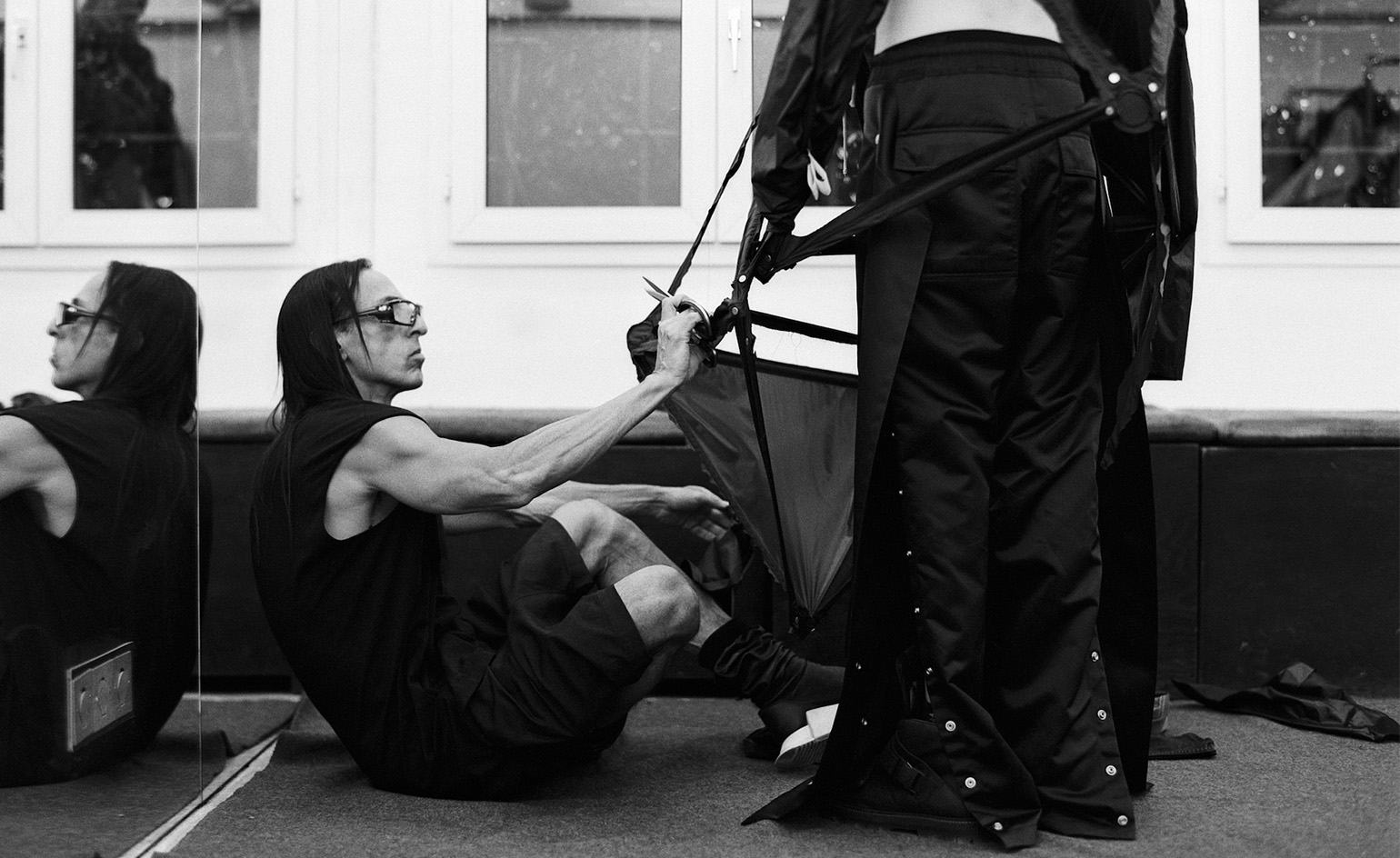 ‘I’m surprised that I got this far’: Rick Owens on his bombastic Paris retrospective, ‘Temple of Love’
‘I’m surprised that I got this far’: Rick Owens on his bombastic Paris retrospective, ‘Temple of Love’The Dark Prince of Fashion sits down with Wallpaper* to discuss legacy, love, and growing old in Paris as a display at the Palais Galliera tells the story of his subversive career
-
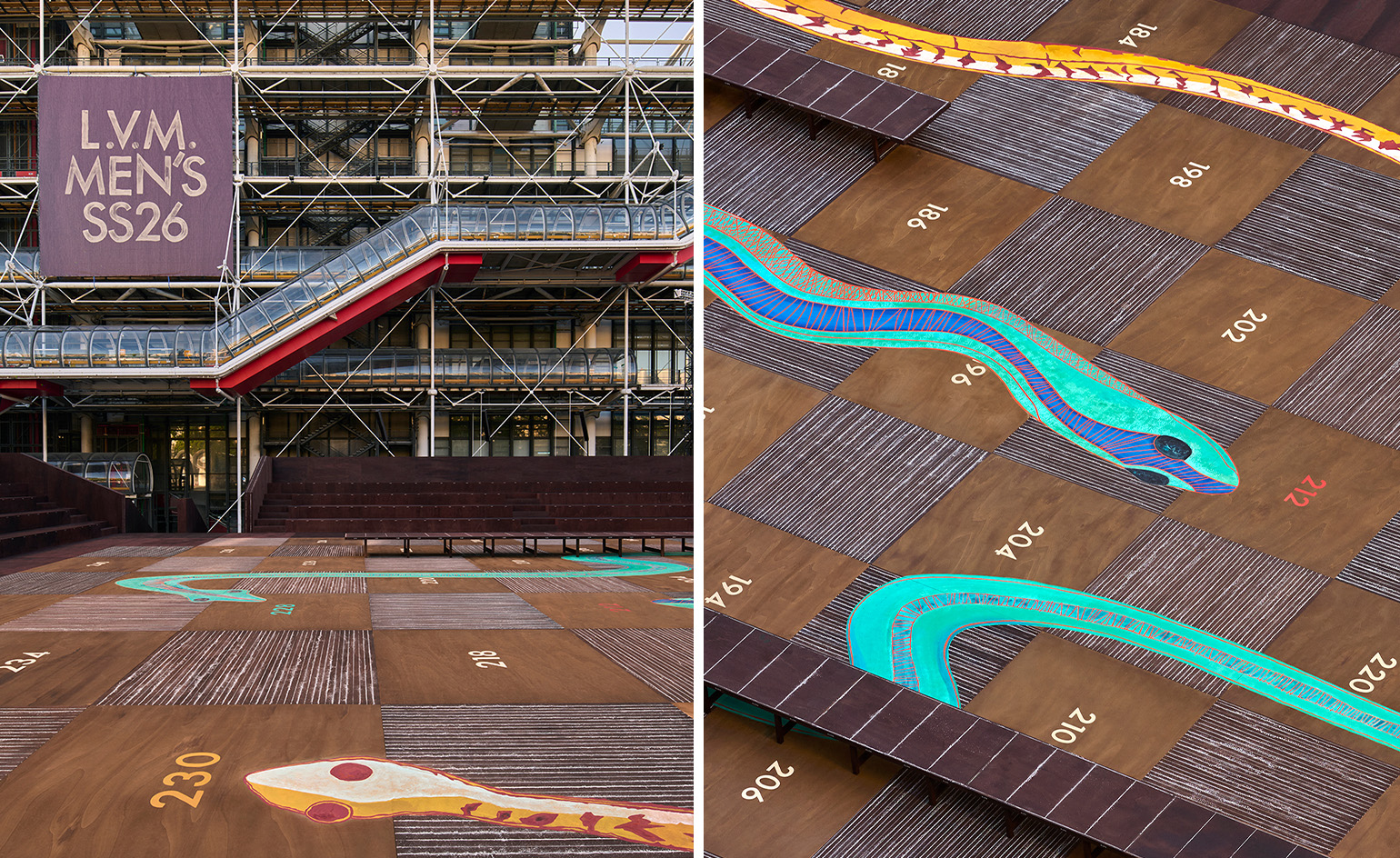 How Pharrell Williams staged a giant game of Snakes and Ladders for his latest Louis Vuitton show
How Pharrell Williams staged a giant game of Snakes and Ladders for his latest Louis Vuitton showThe colossal game board was designed by Indian architect Bijoy Jain, whose practice Studio Mumbai is famed for its 'cosmic' large-scale projects
-
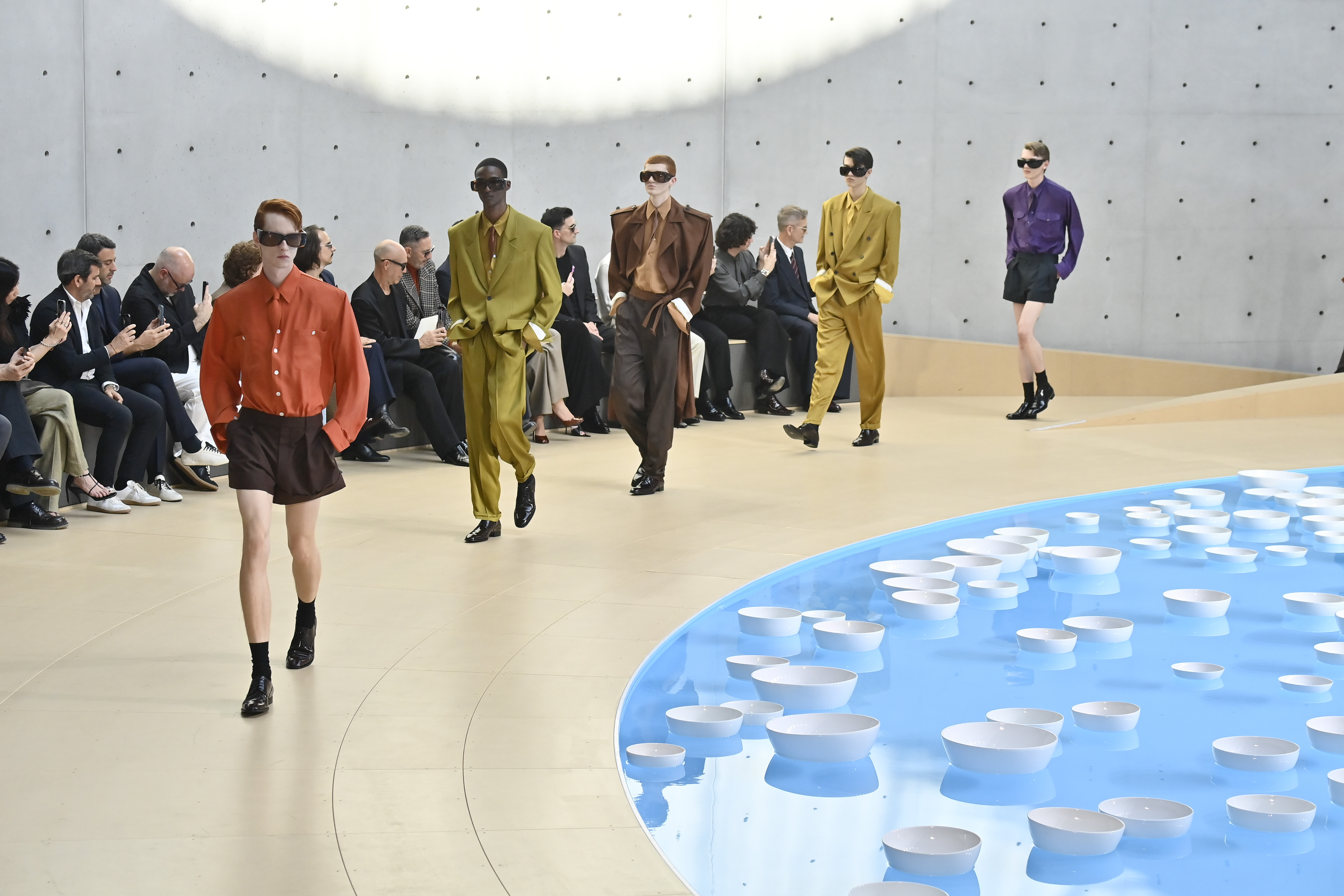 Saint Laurent transports from ‘Paris to Fire Island’ for escapist S/S 2026 menswear collection
Saint Laurent transports from ‘Paris to Fire Island’ for escapist S/S 2026 menswear collectionA mood of ease and escapism infused Anthony Vaccarello’s latest men’s collection for Saint Laurent, shown in Paris on Tuesday afternoon, which looked towards Fire Island and the queer artists that used it as a haven in the 1970s
-
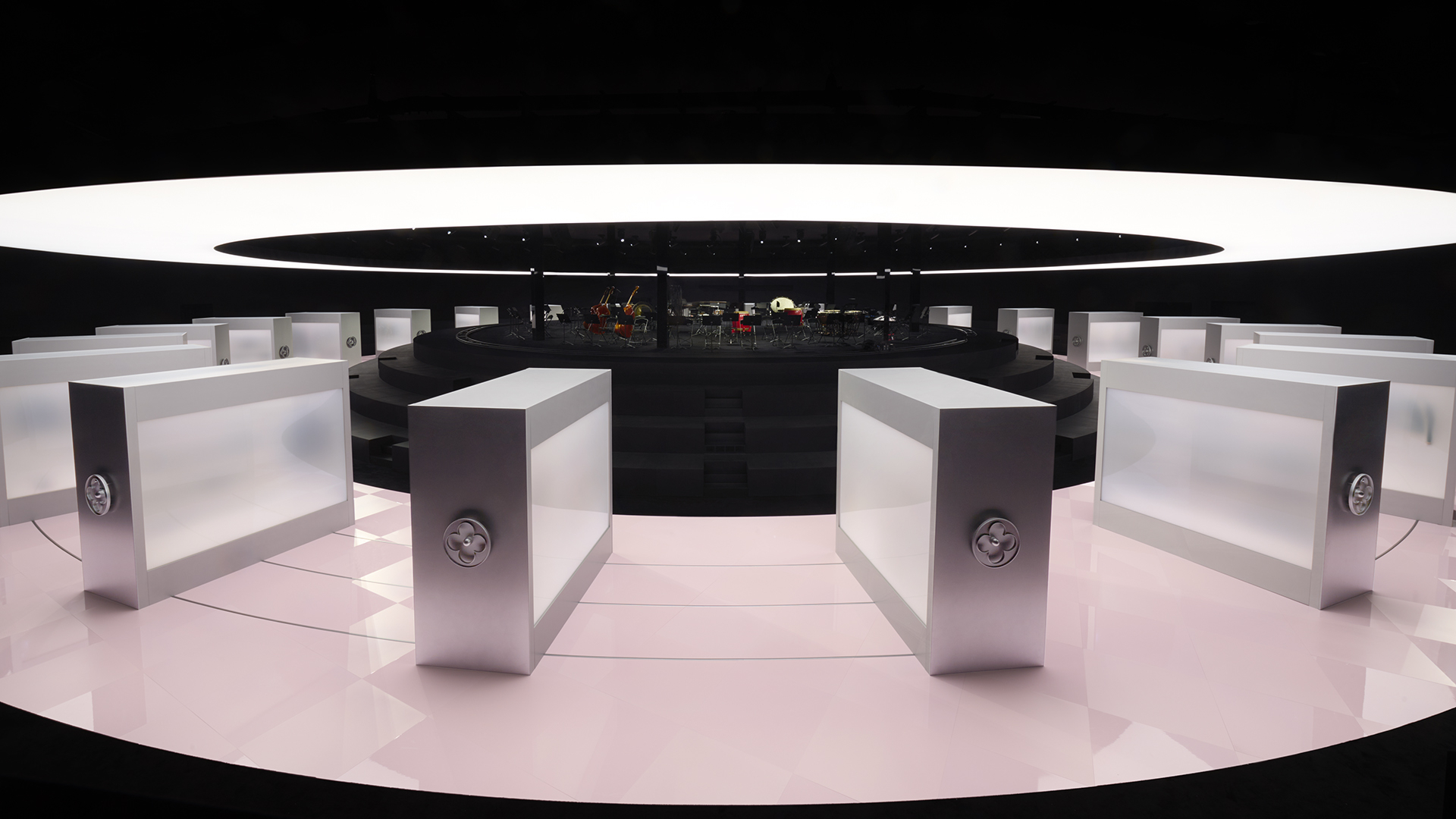 Paris Fashion Week Men’s S/S 2026: live updates from the Wallpaper* team
Paris Fashion Week Men’s S/S 2026: live updates from the Wallpaper* teamFrom 24-29 June, Paris Fashion Week Men’s arrives in the French capital. Follow along for a first look at the shows, presentations and other fashion happenings, as seen by the Wallpaper* editors
-
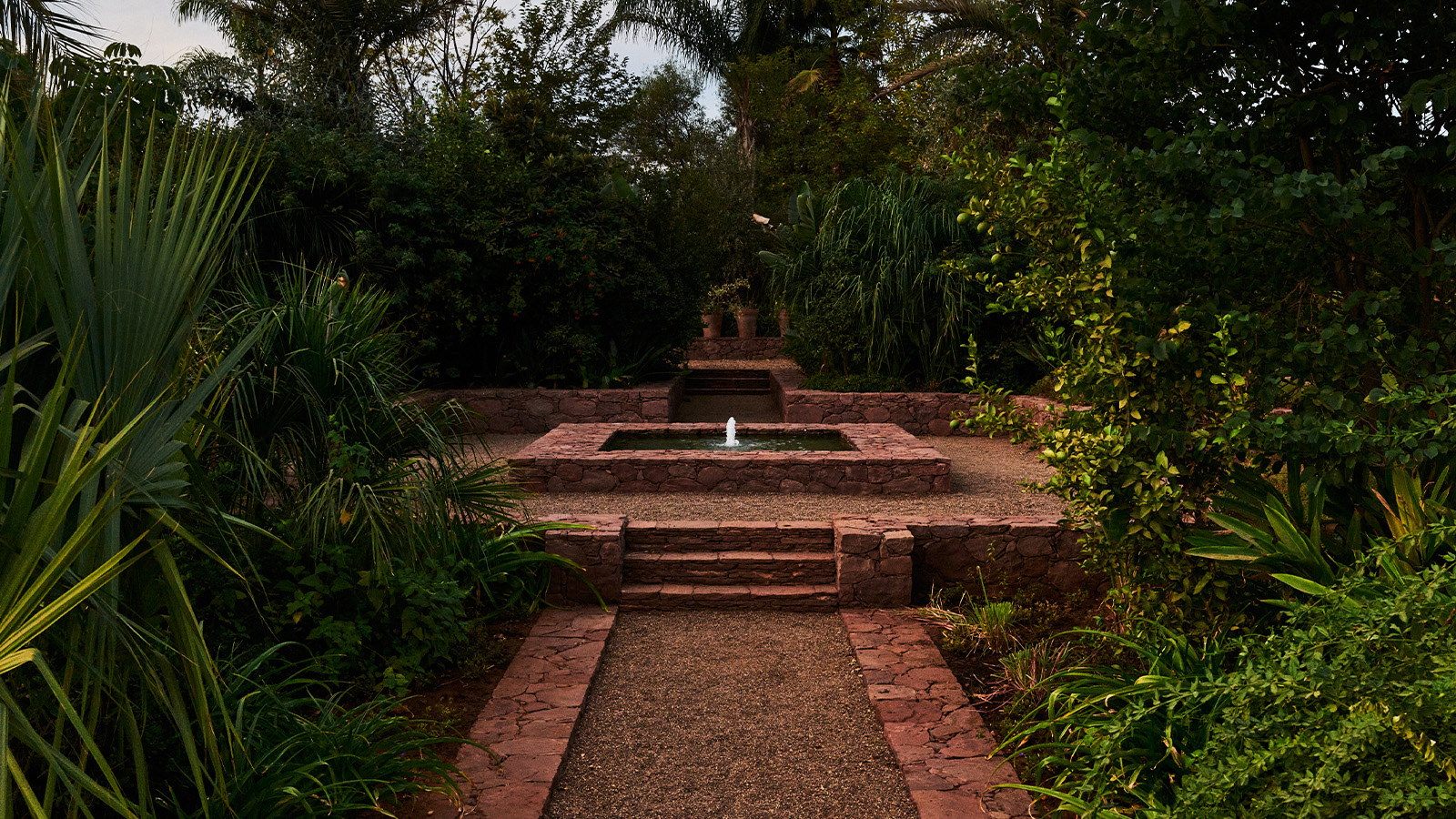 Inside the Ourika Community Gardens, YSL Beauty’s Moroccan Eden
Inside the Ourika Community Gardens, YSL Beauty’s Moroccan EdenAt the base of Morocco’s Atlas Mountains, YSL Beauty's gardens are tended by local women in a bid by the brand to give back to the country which so inspired its founder